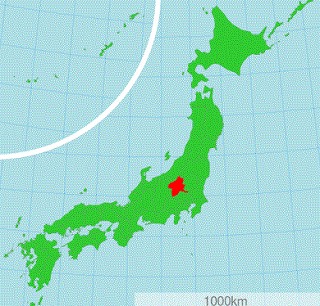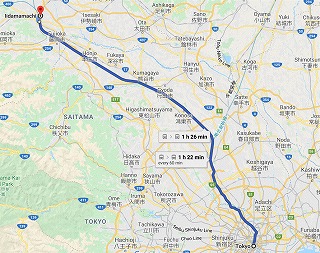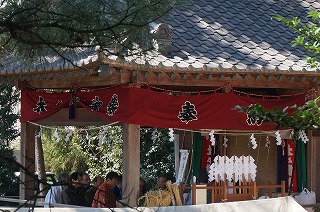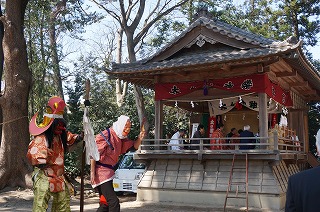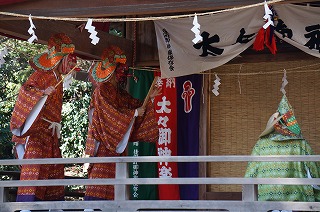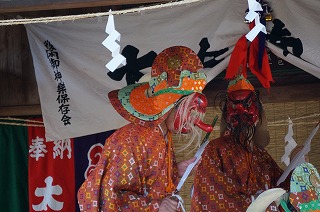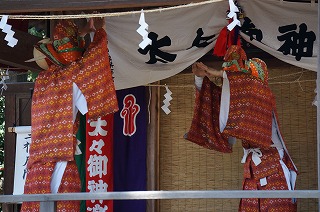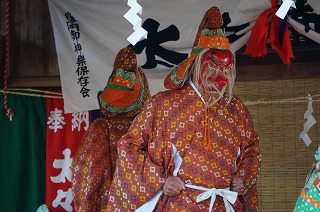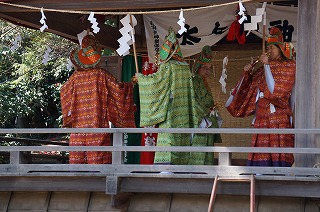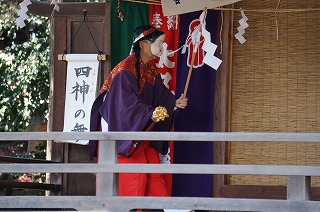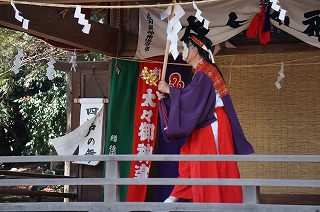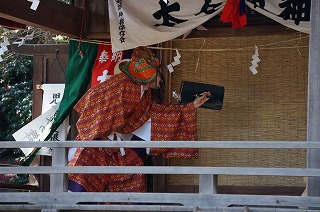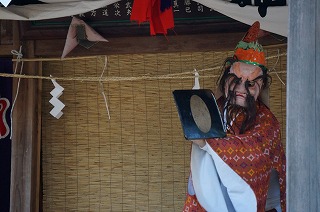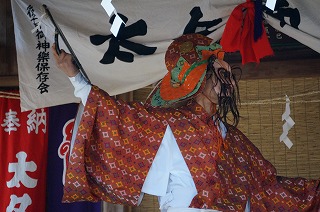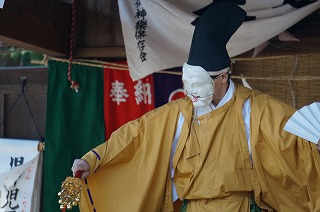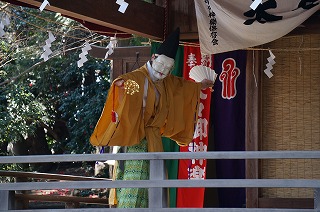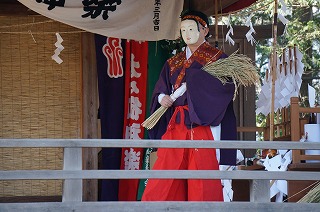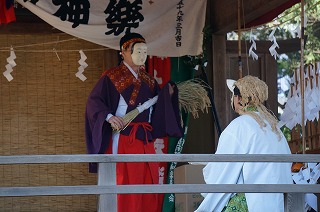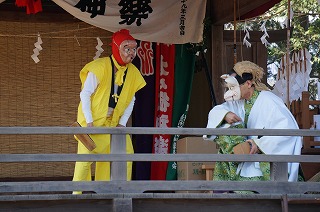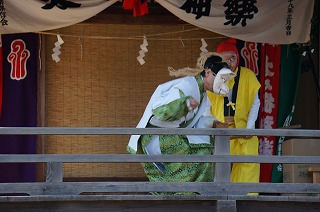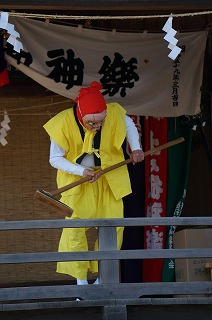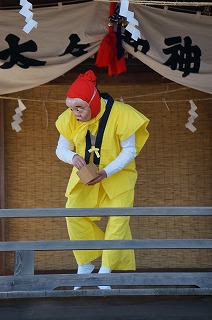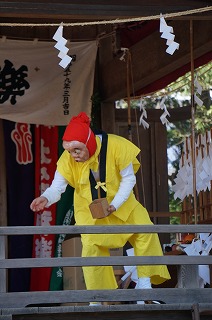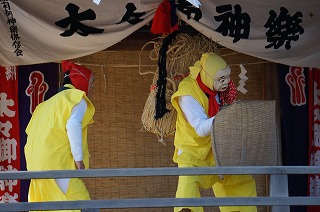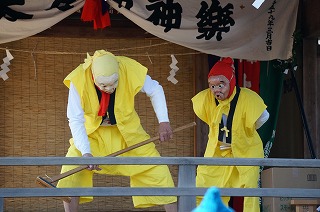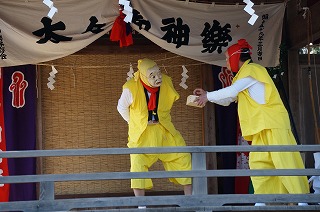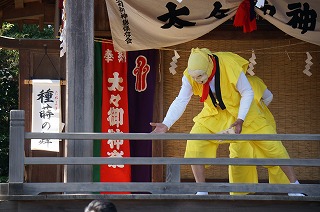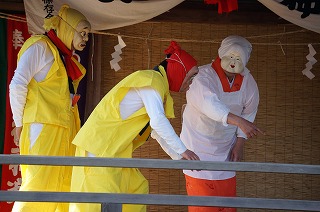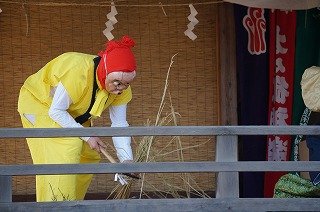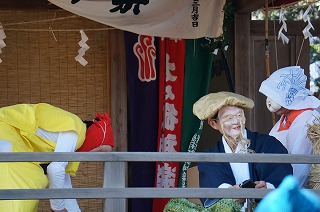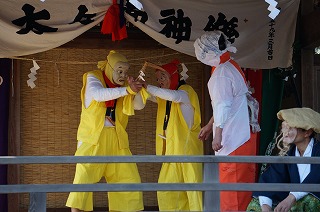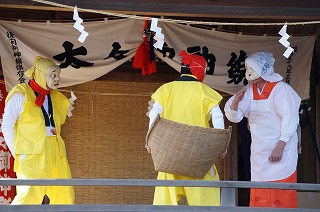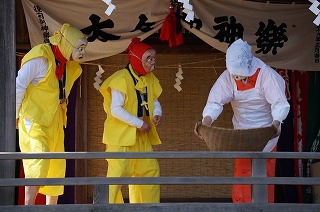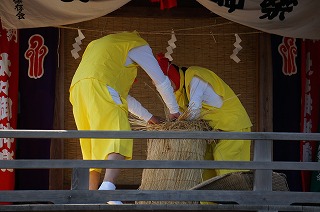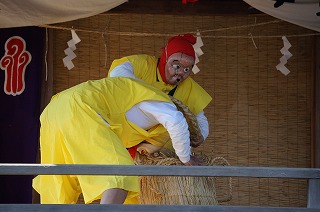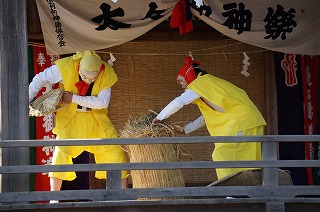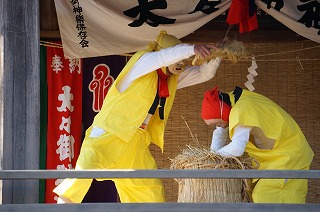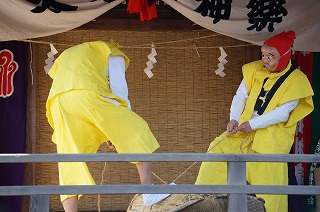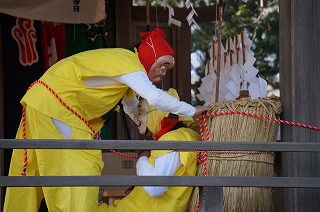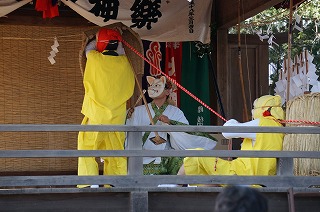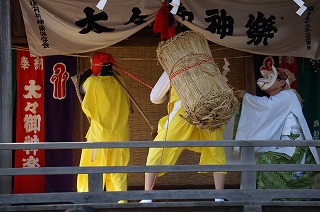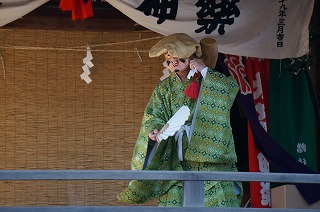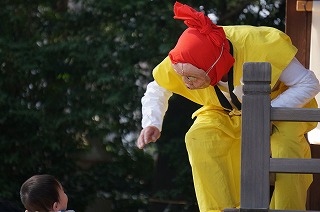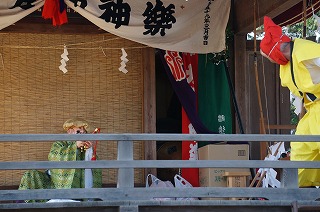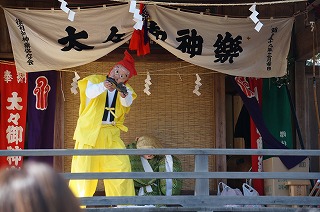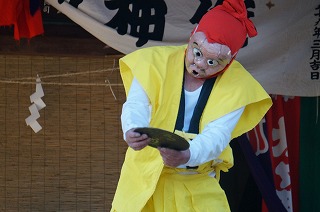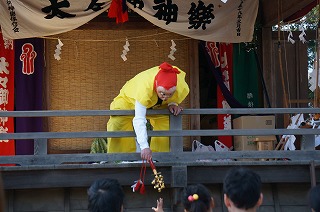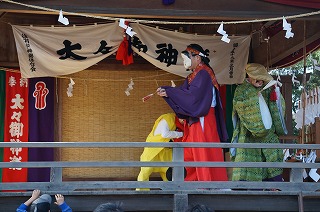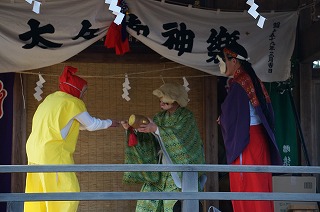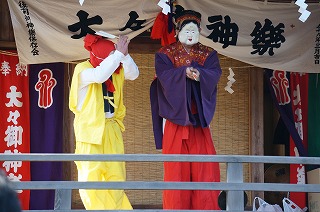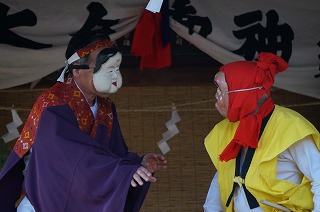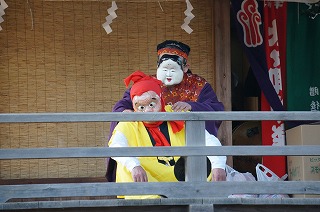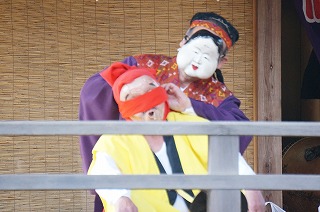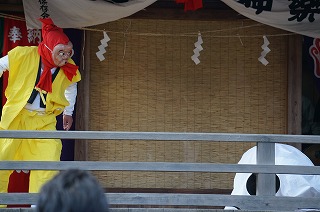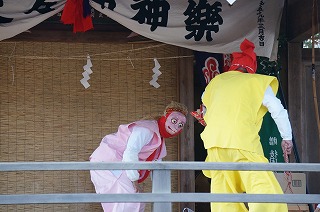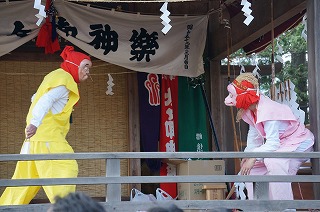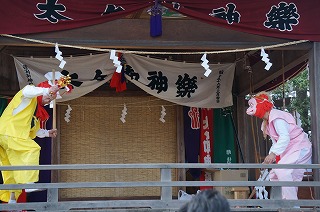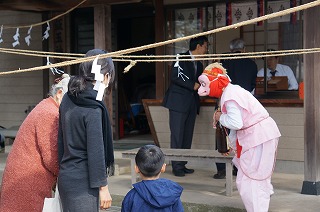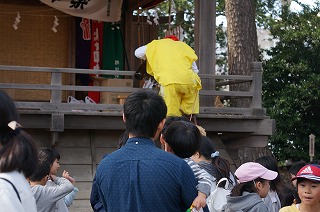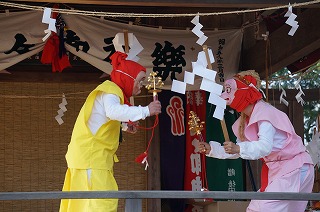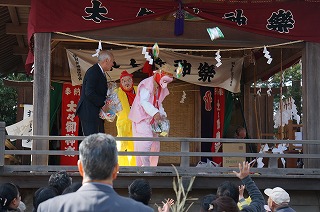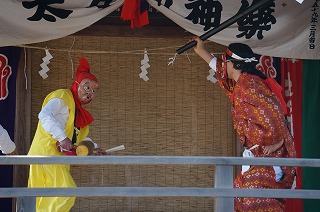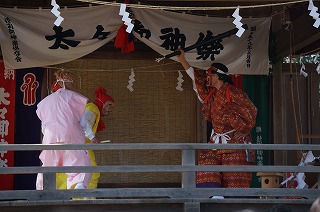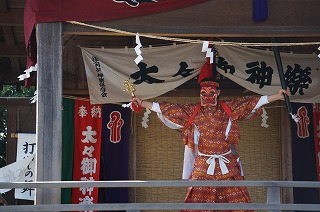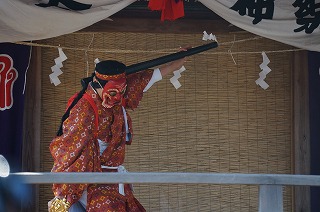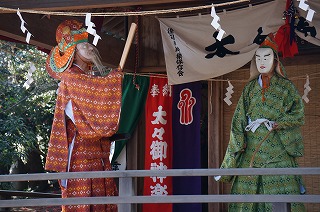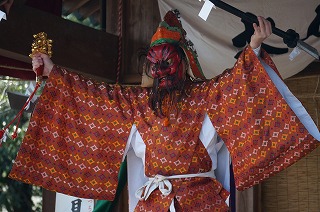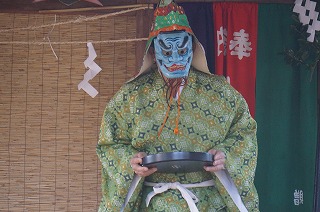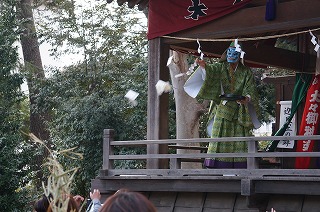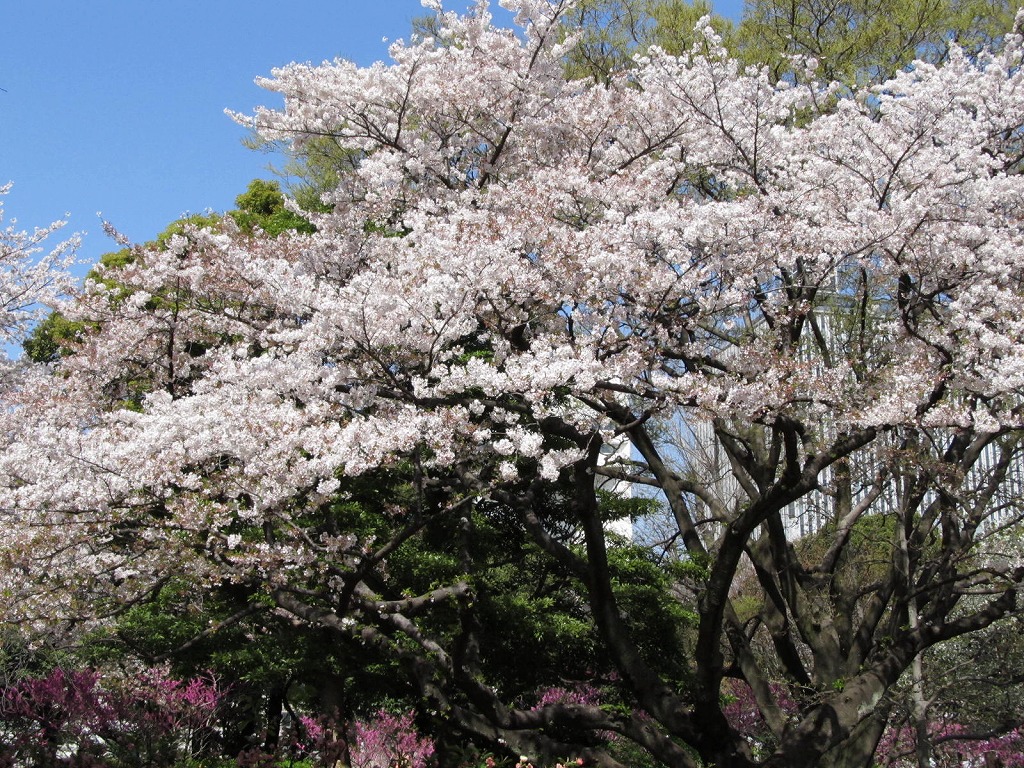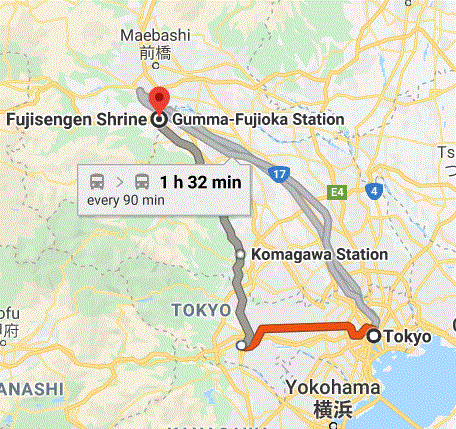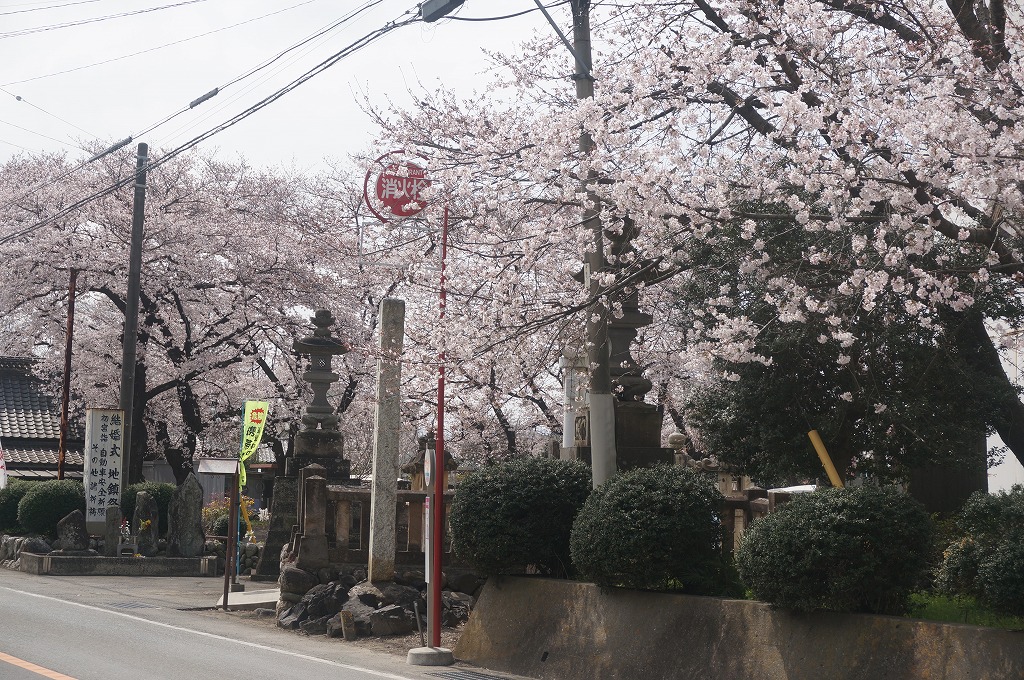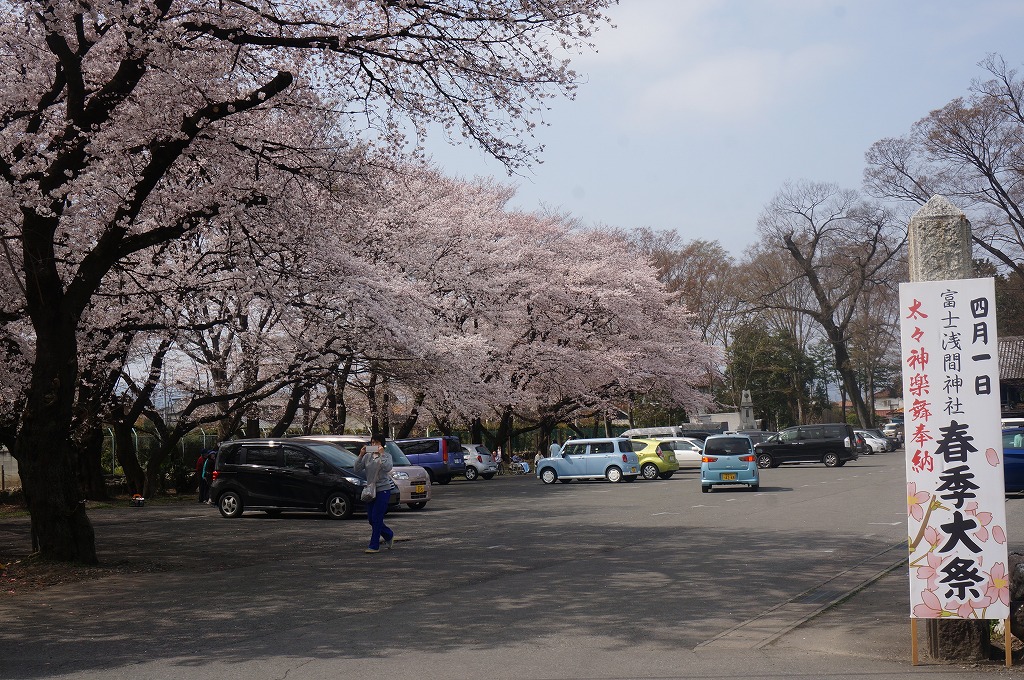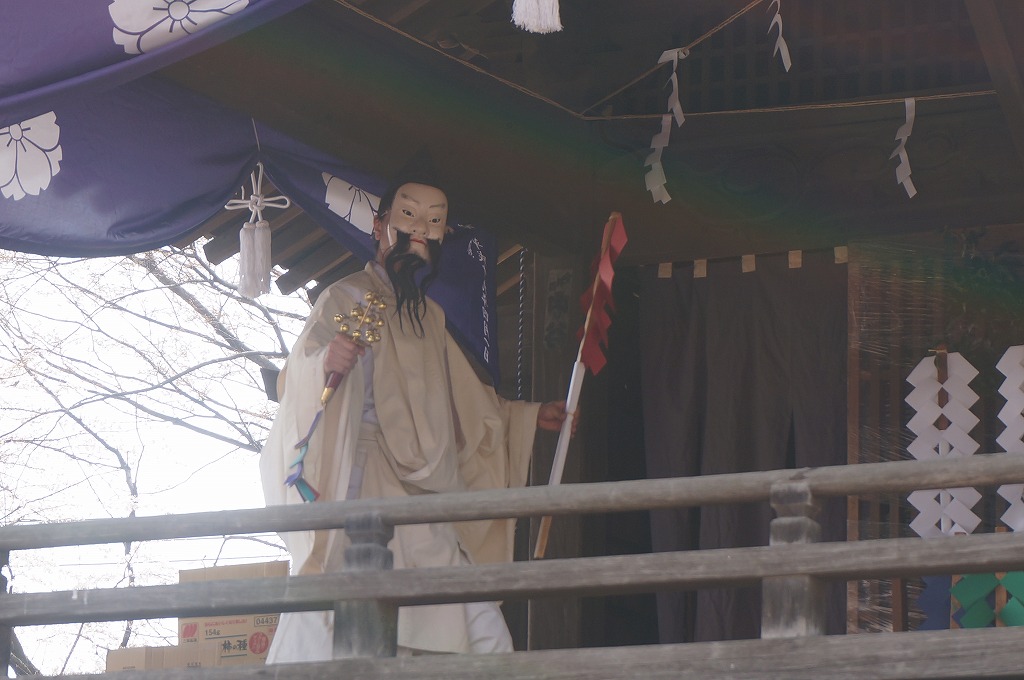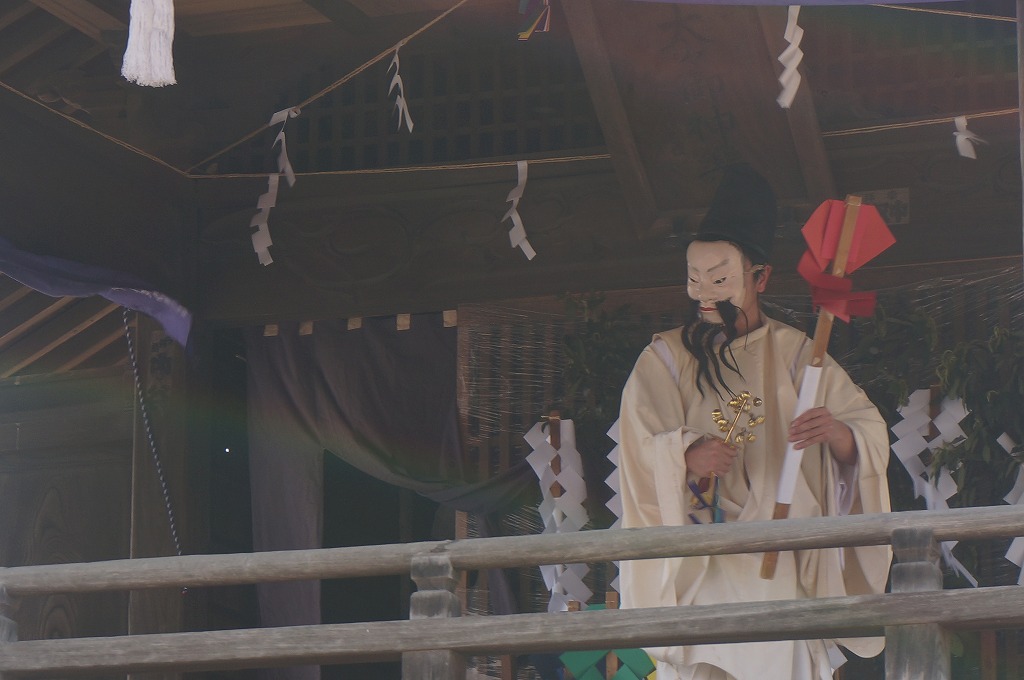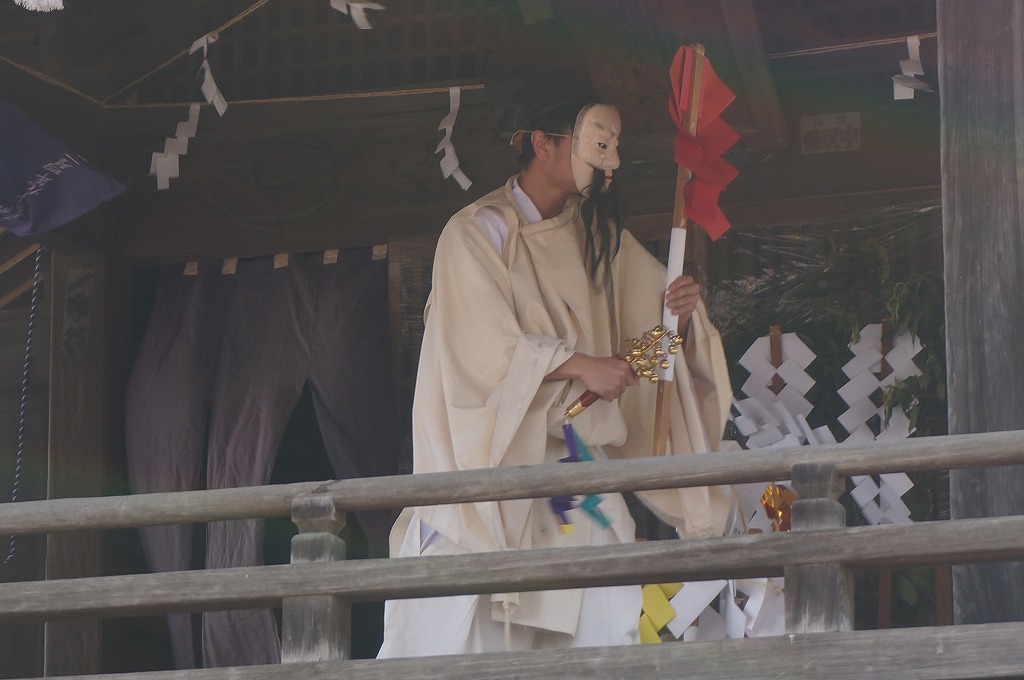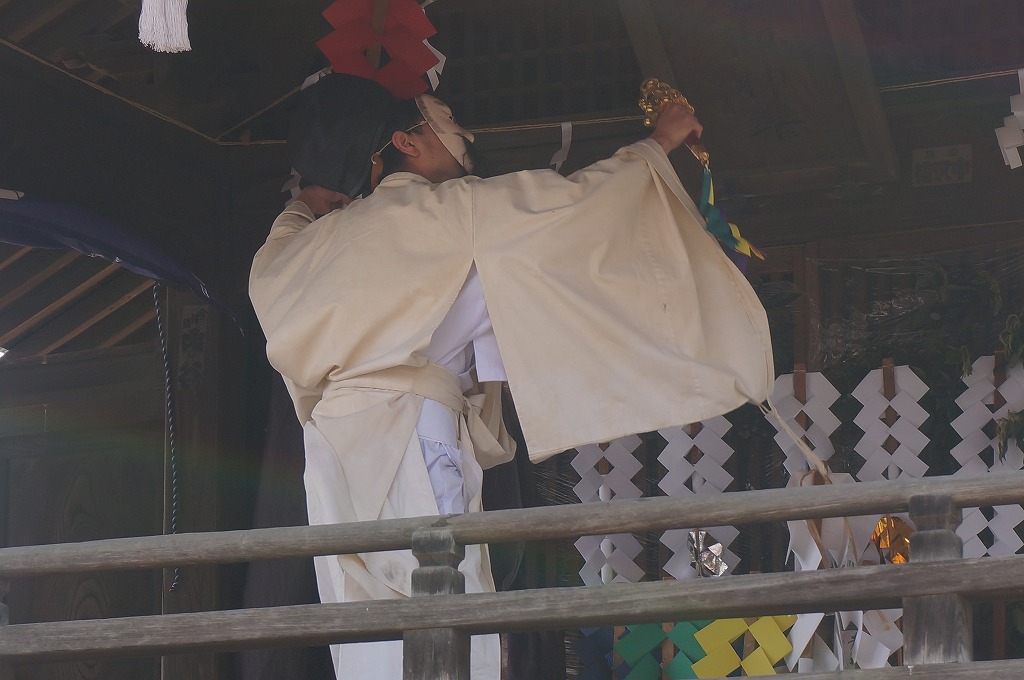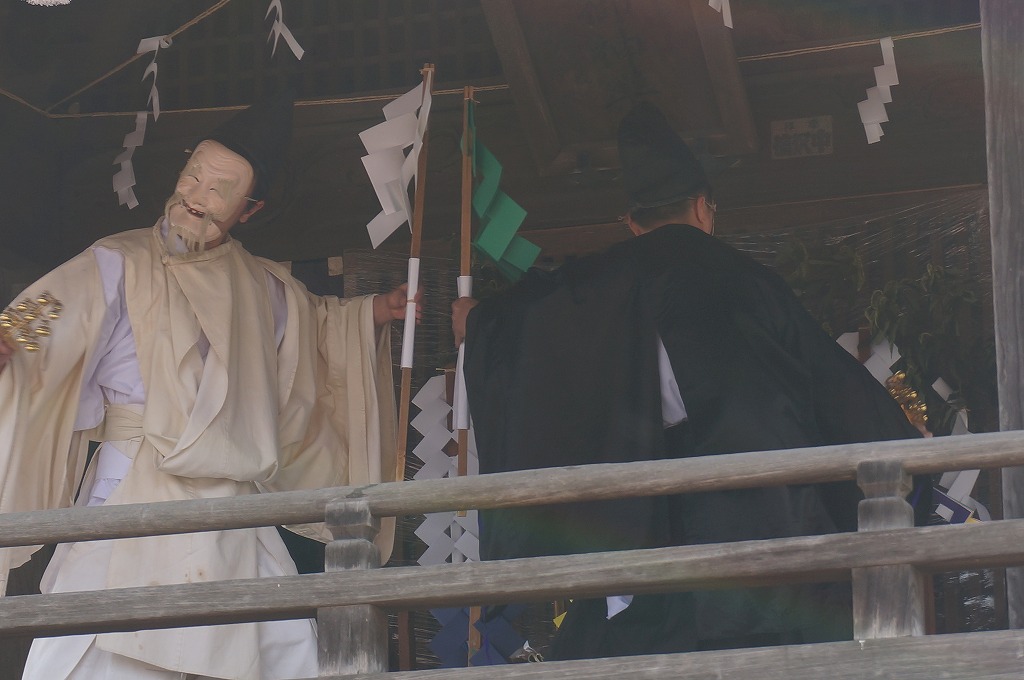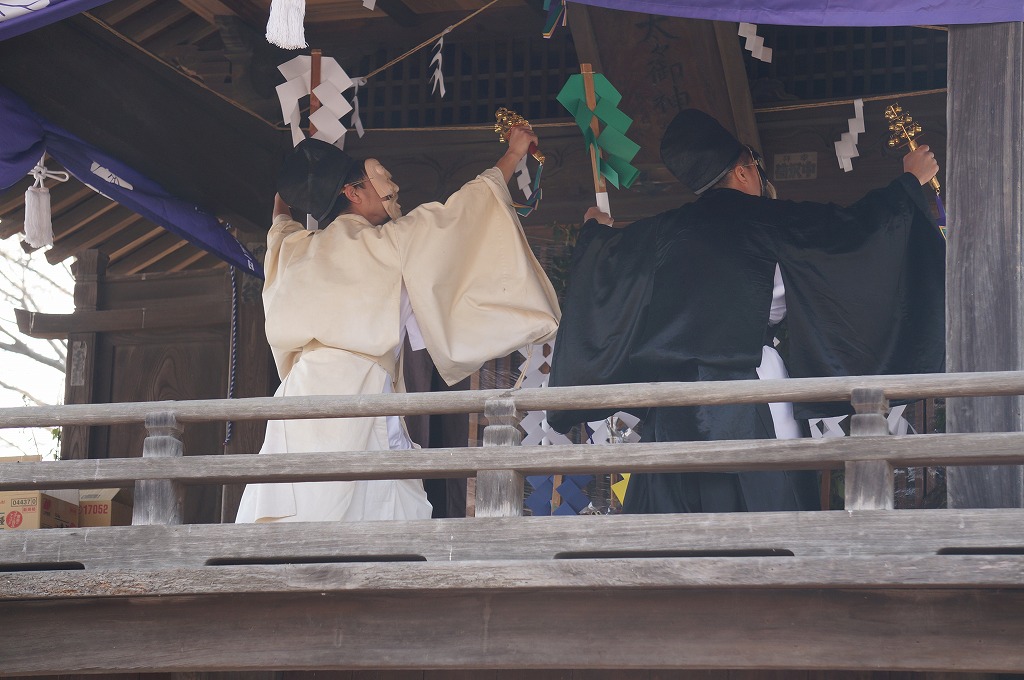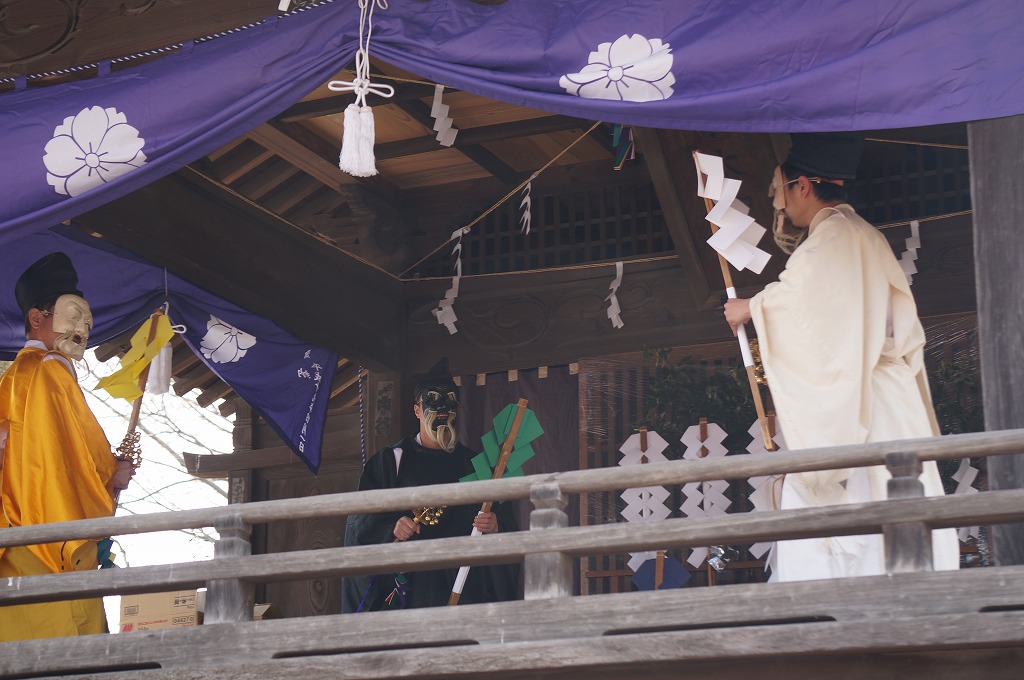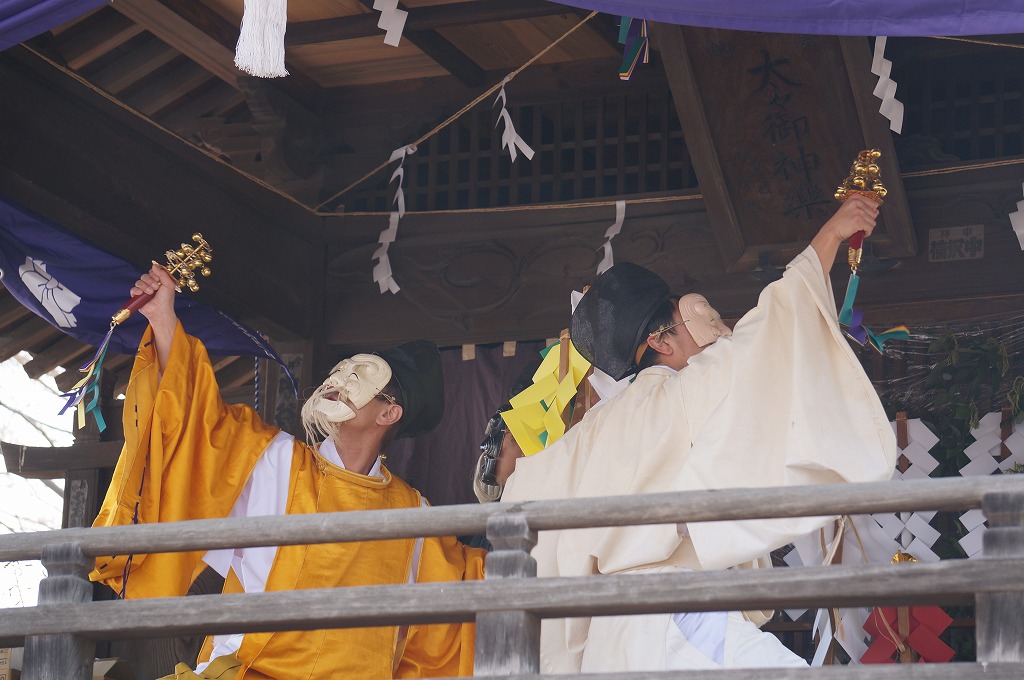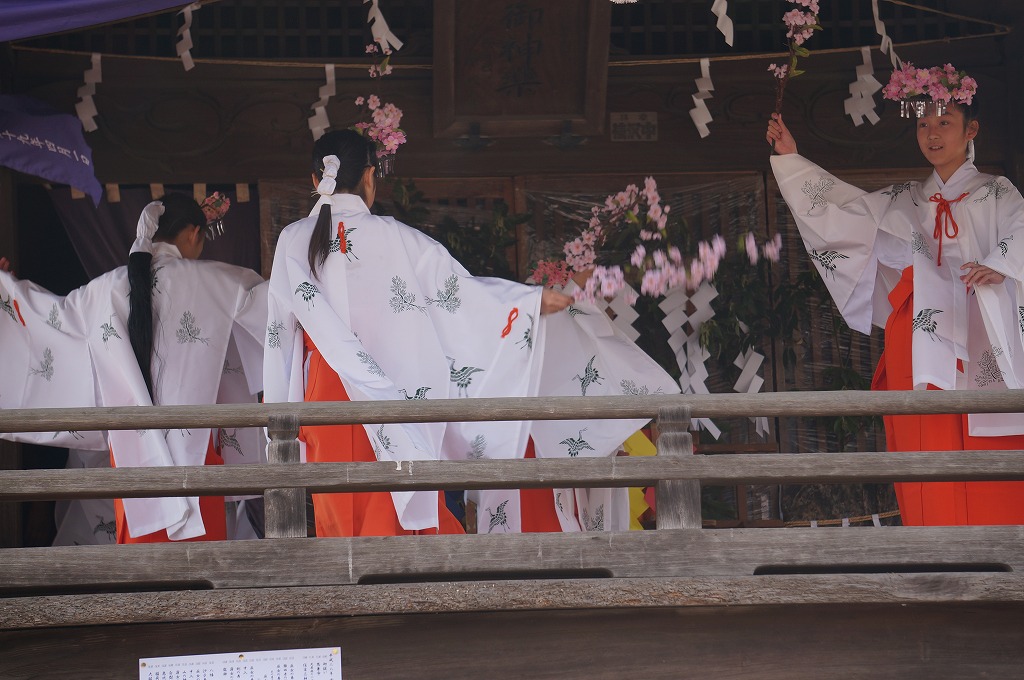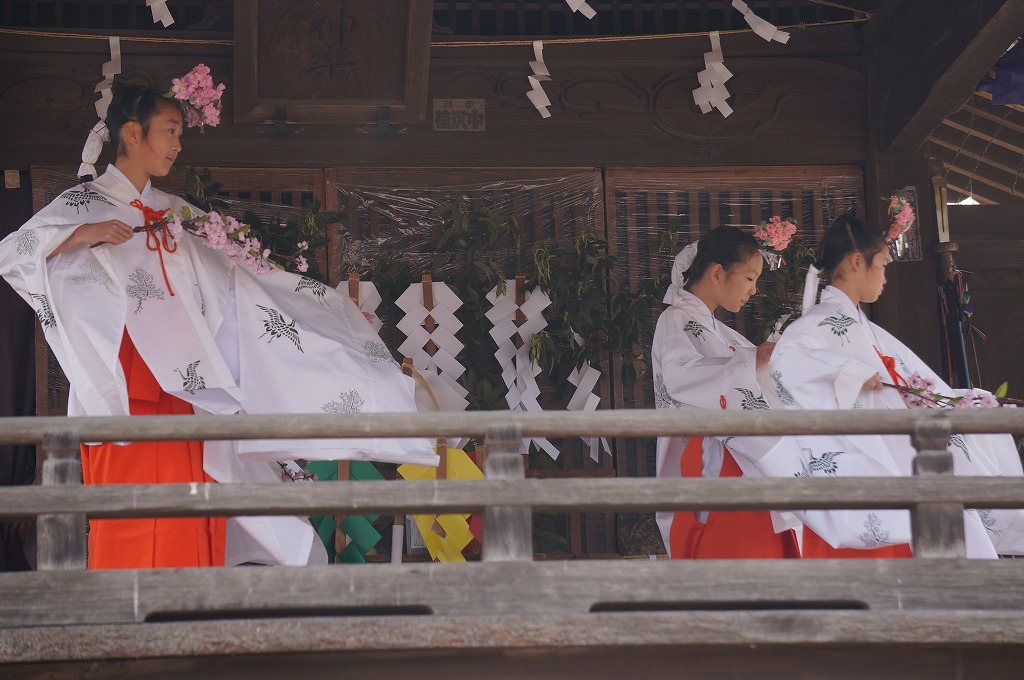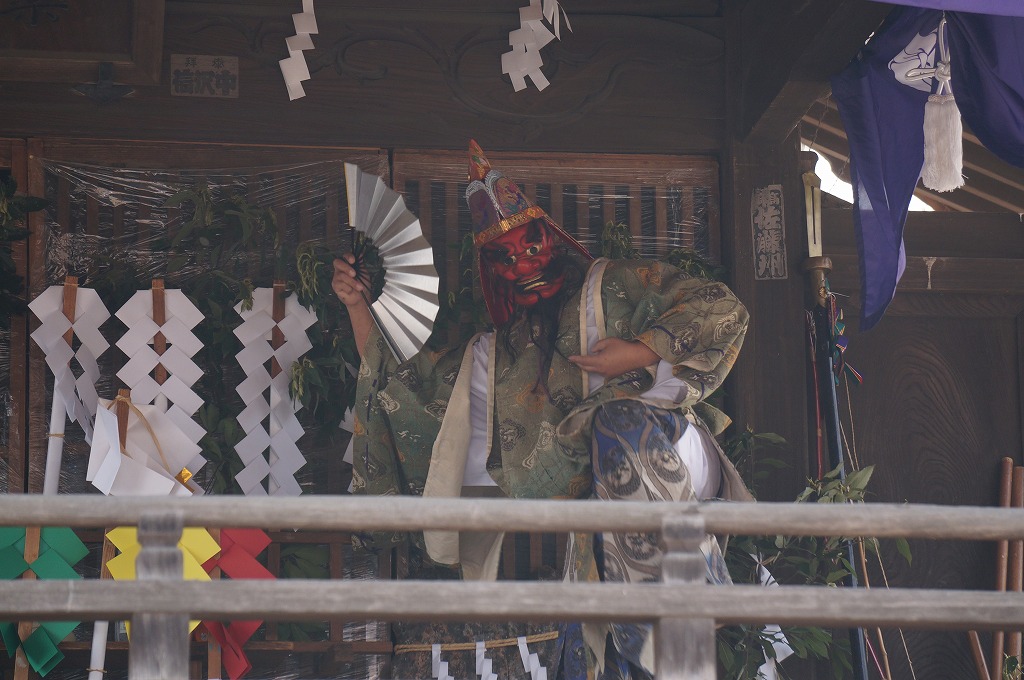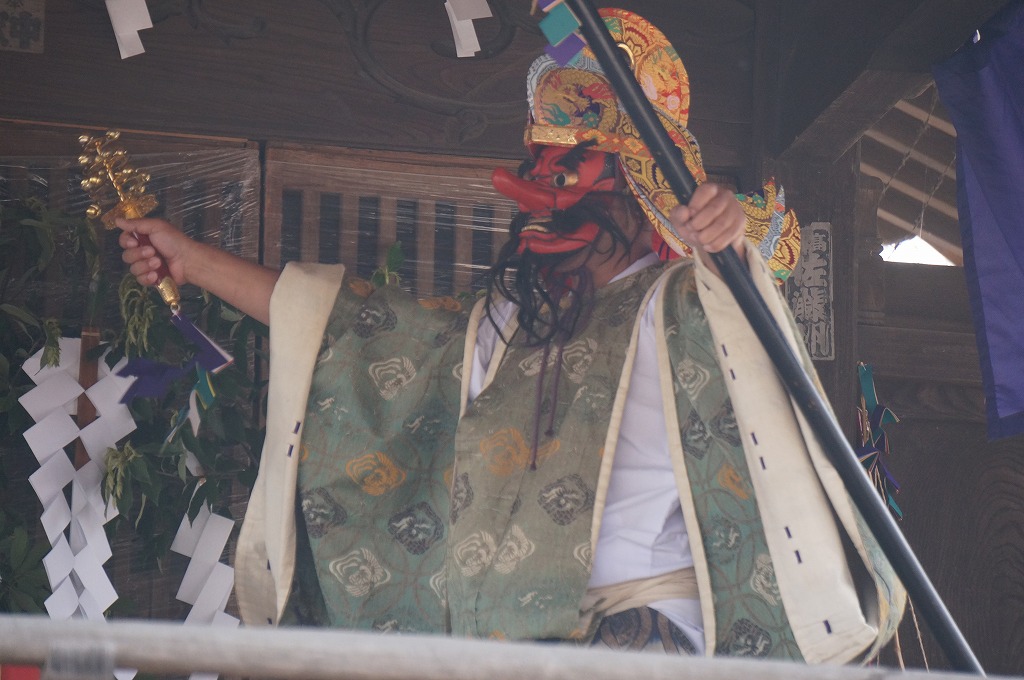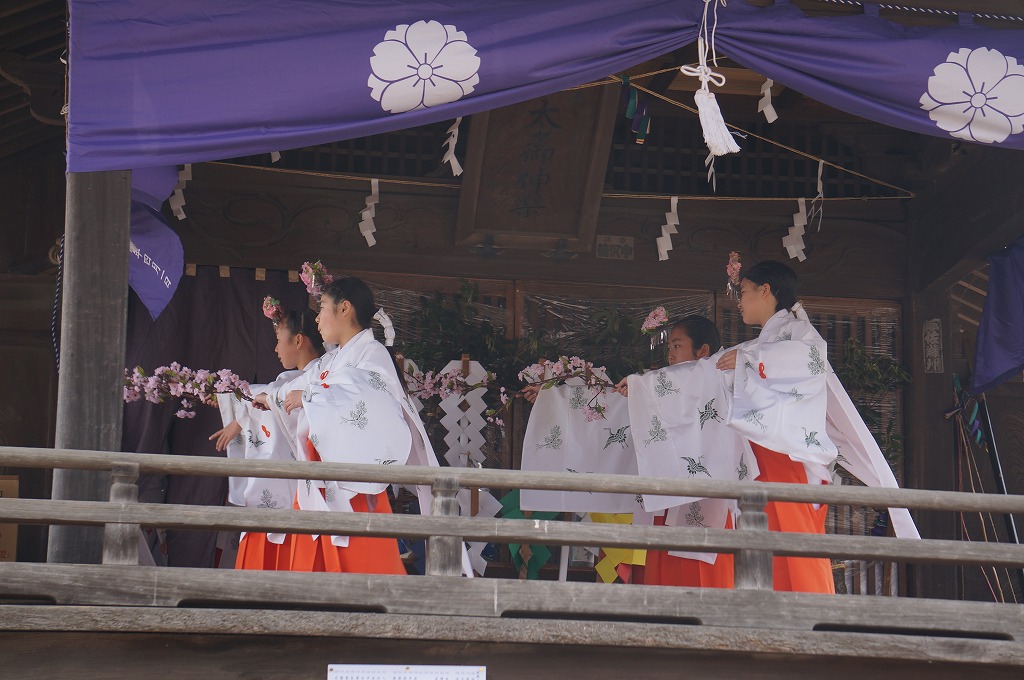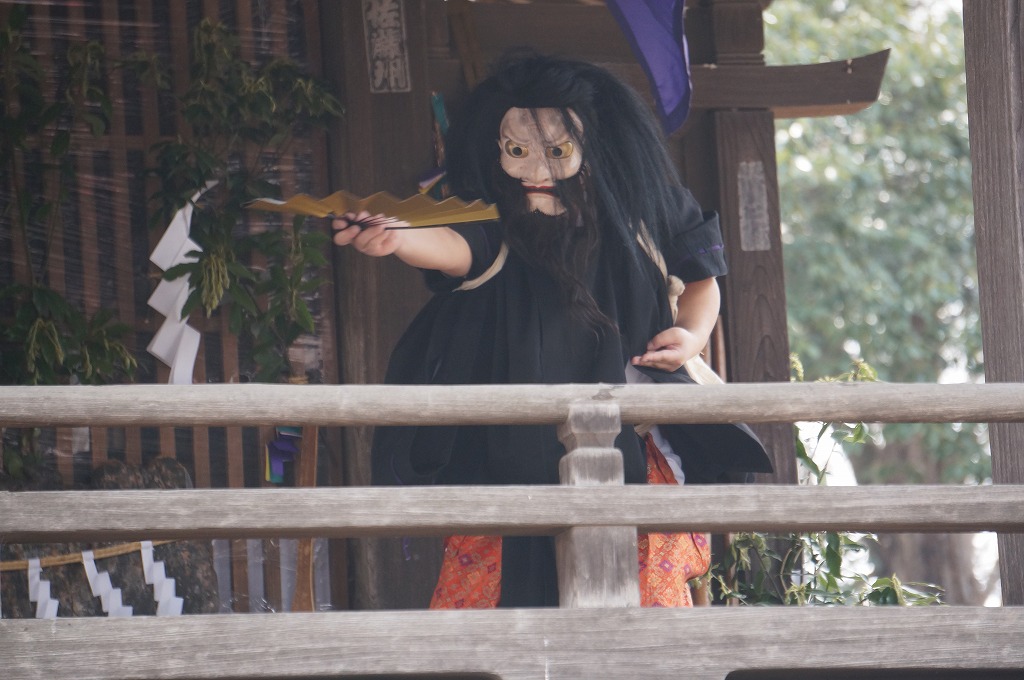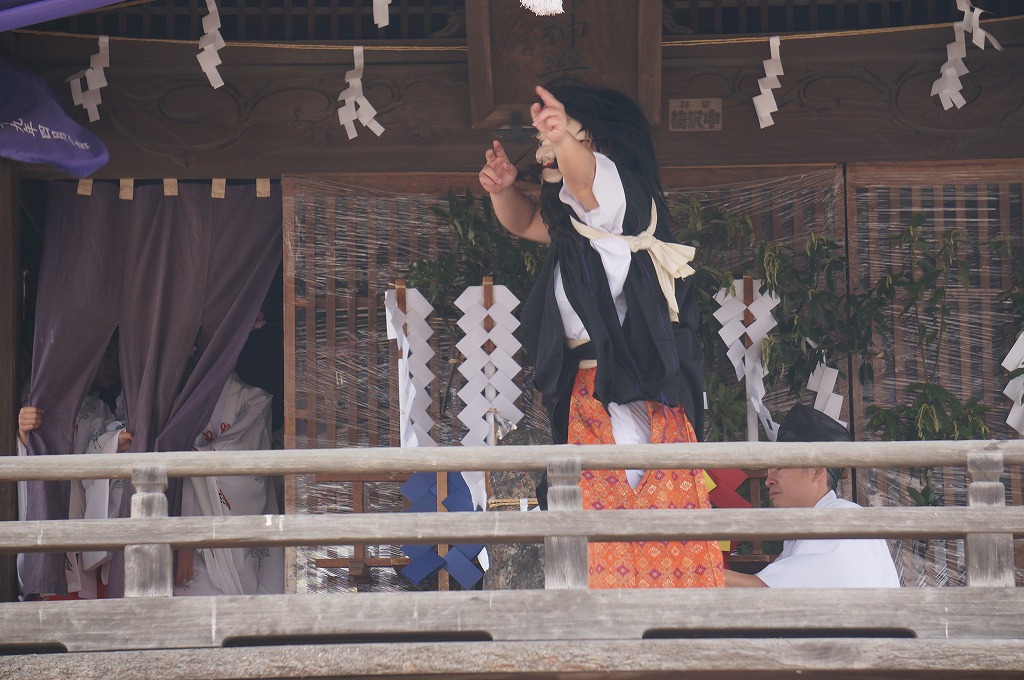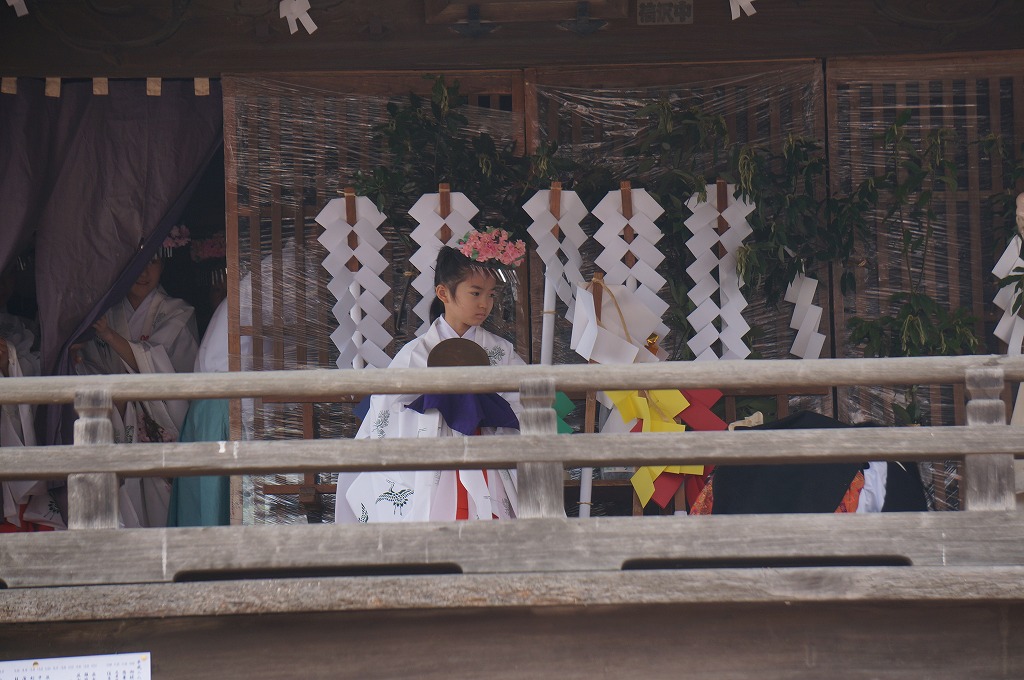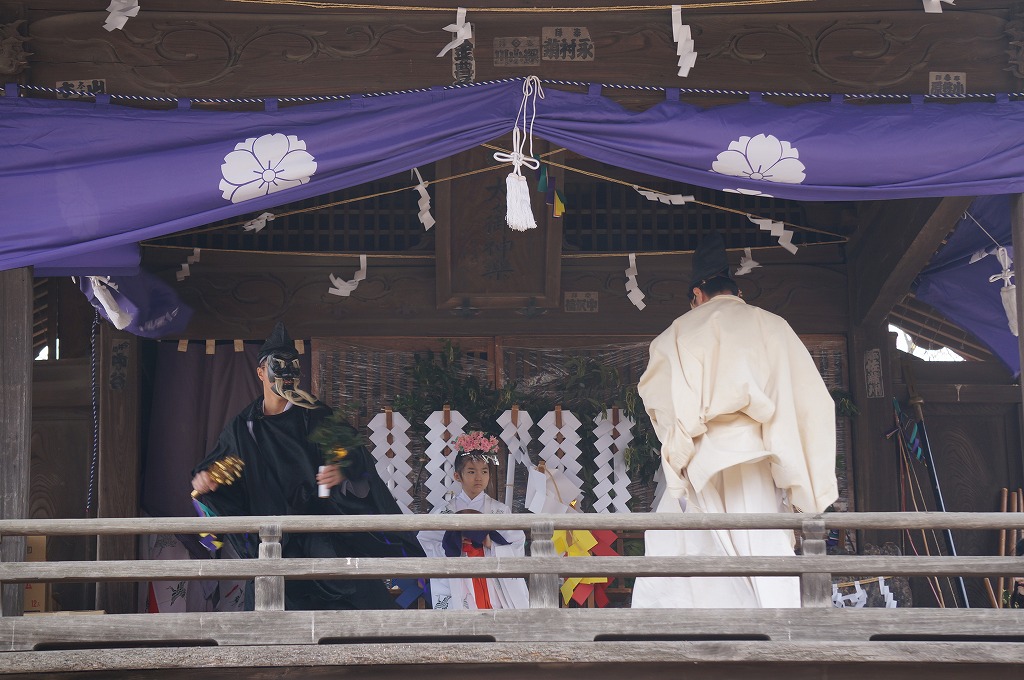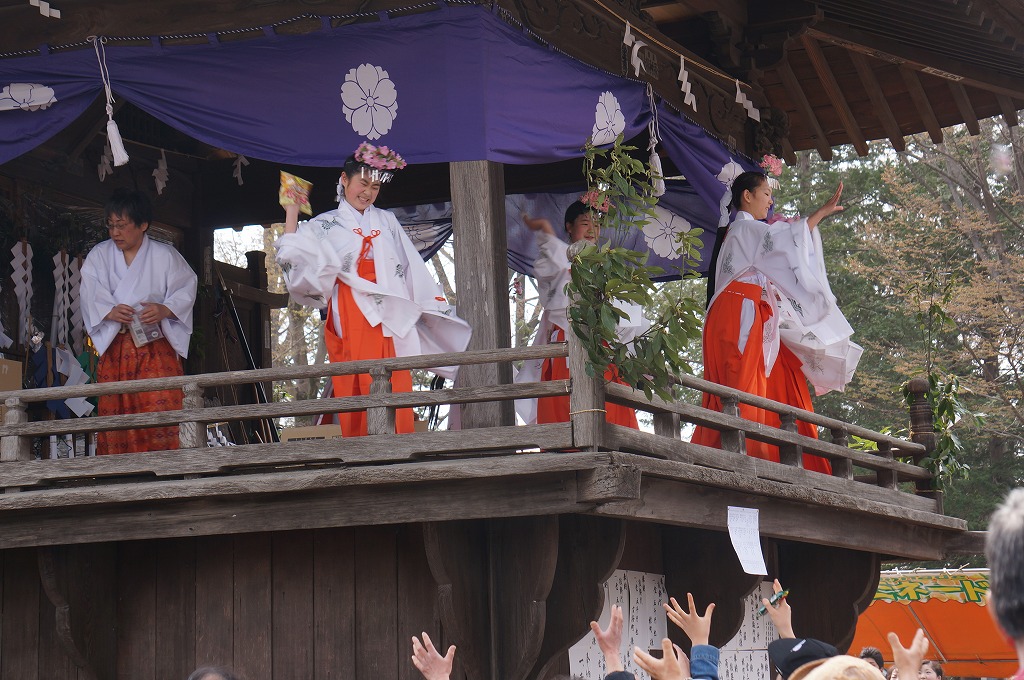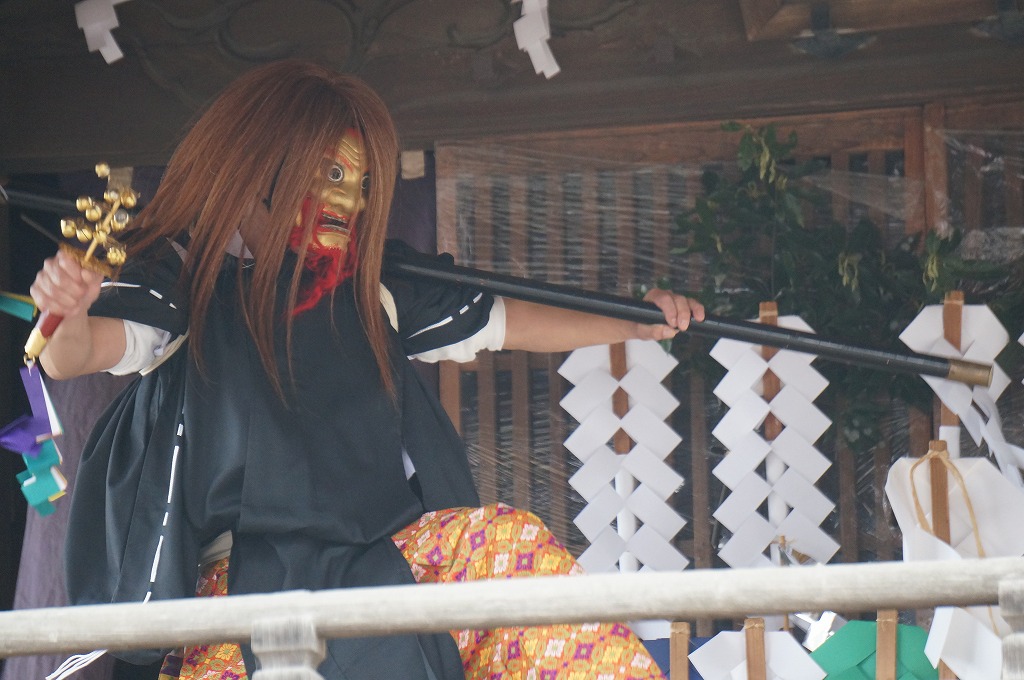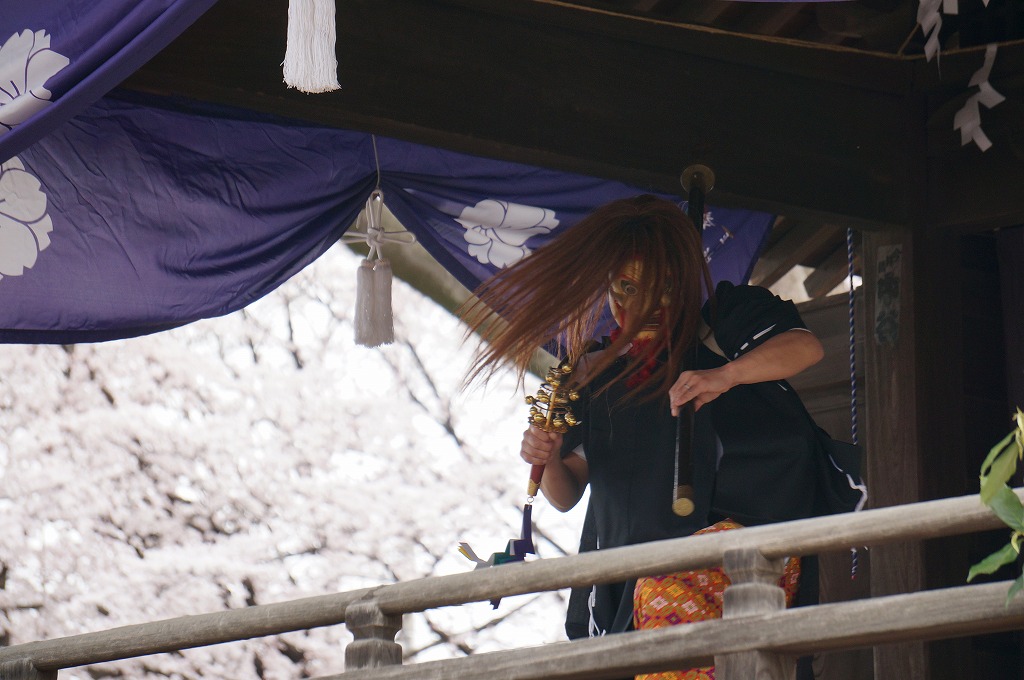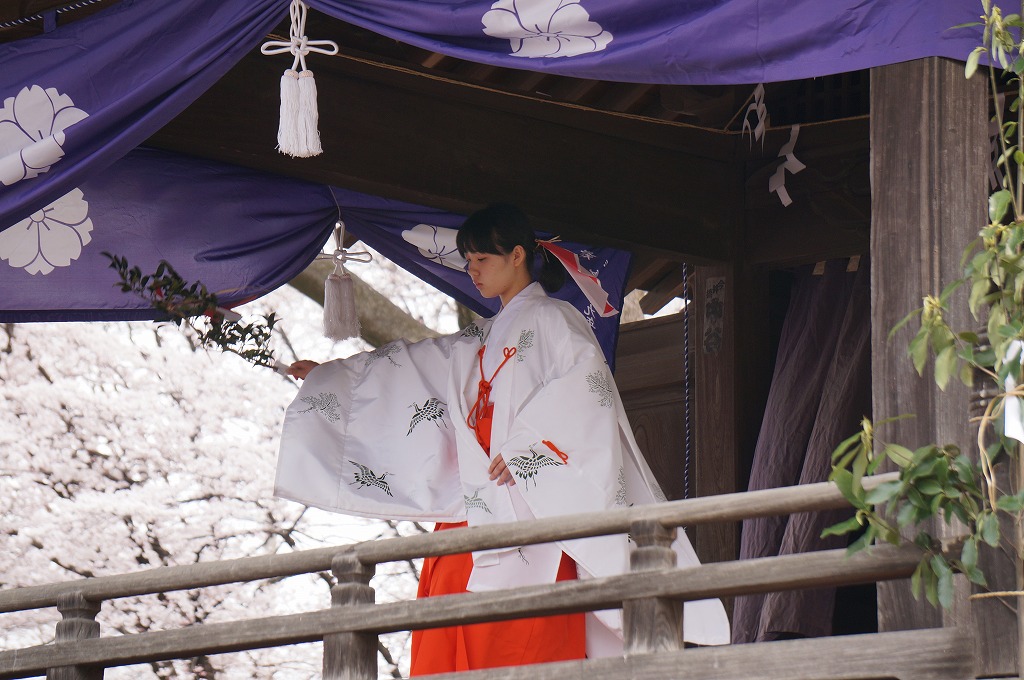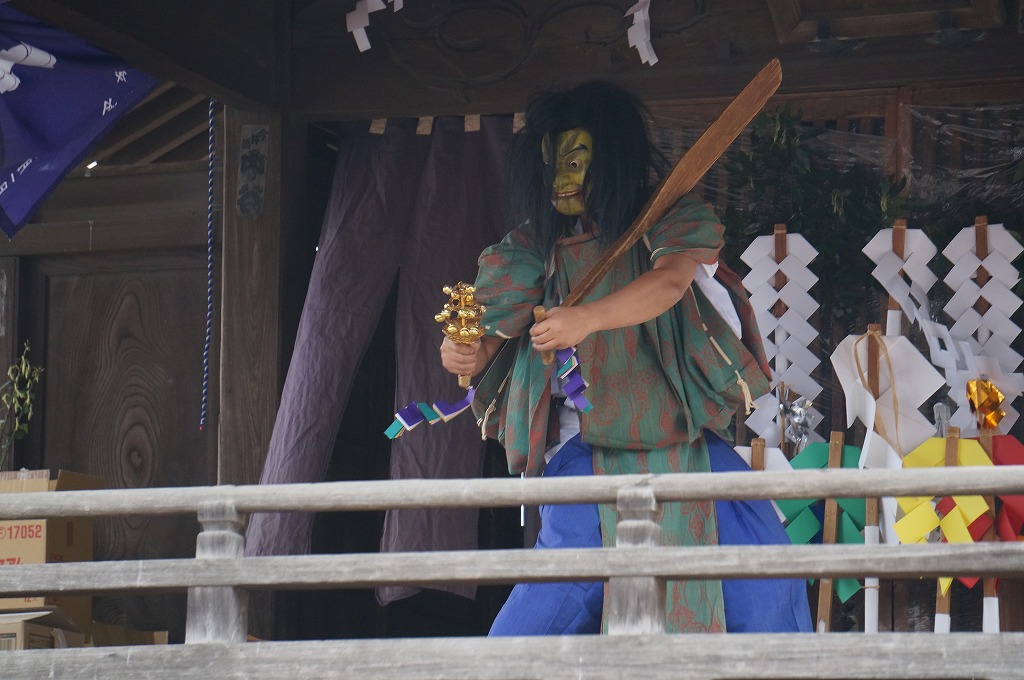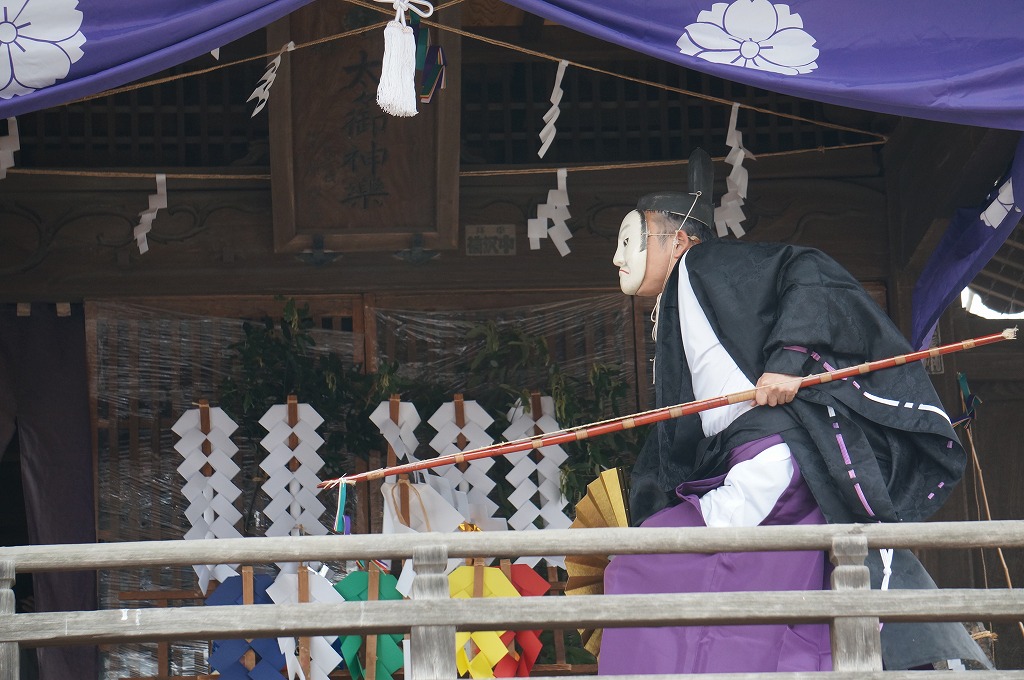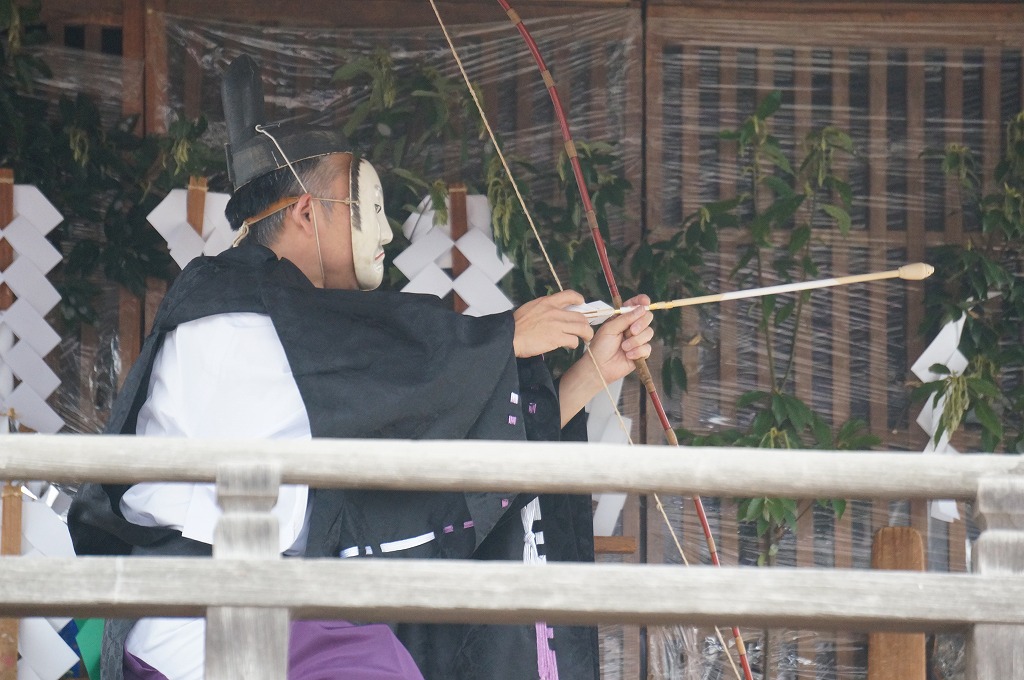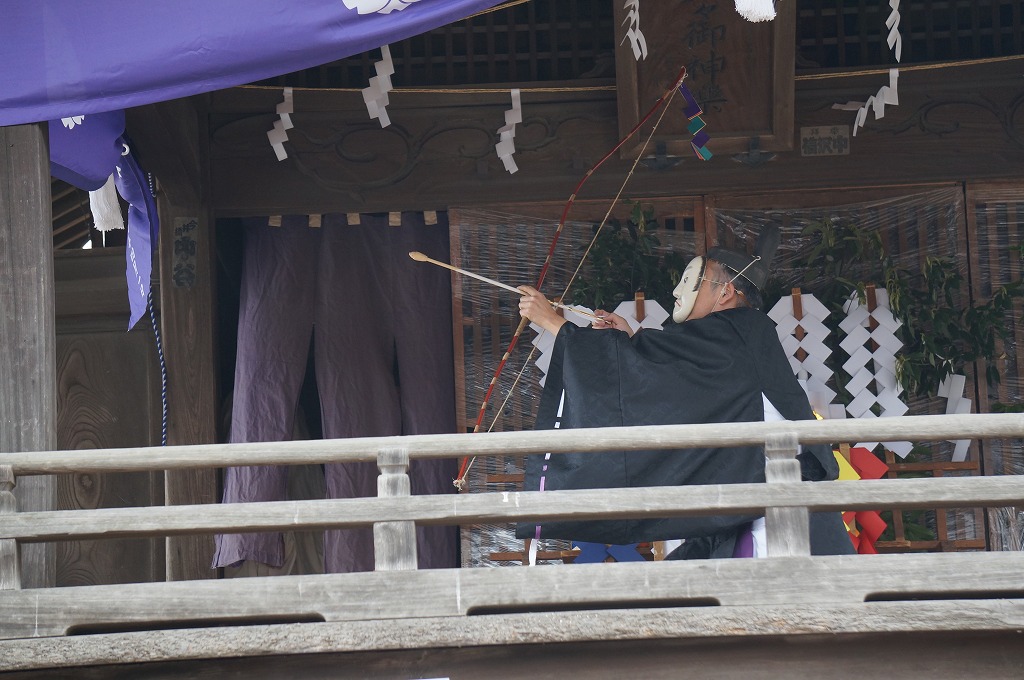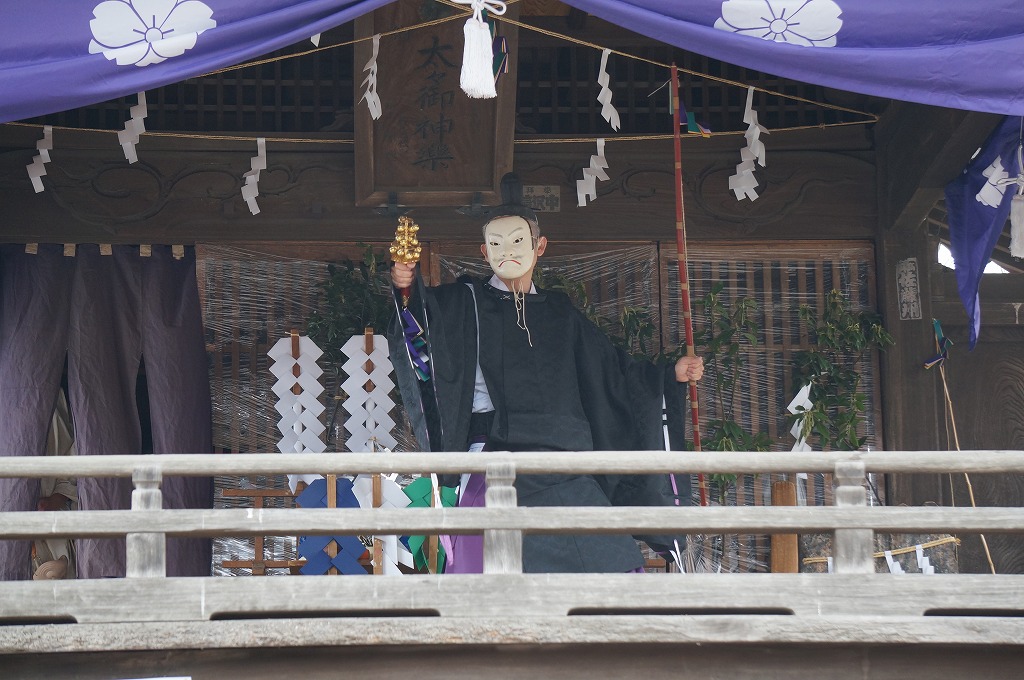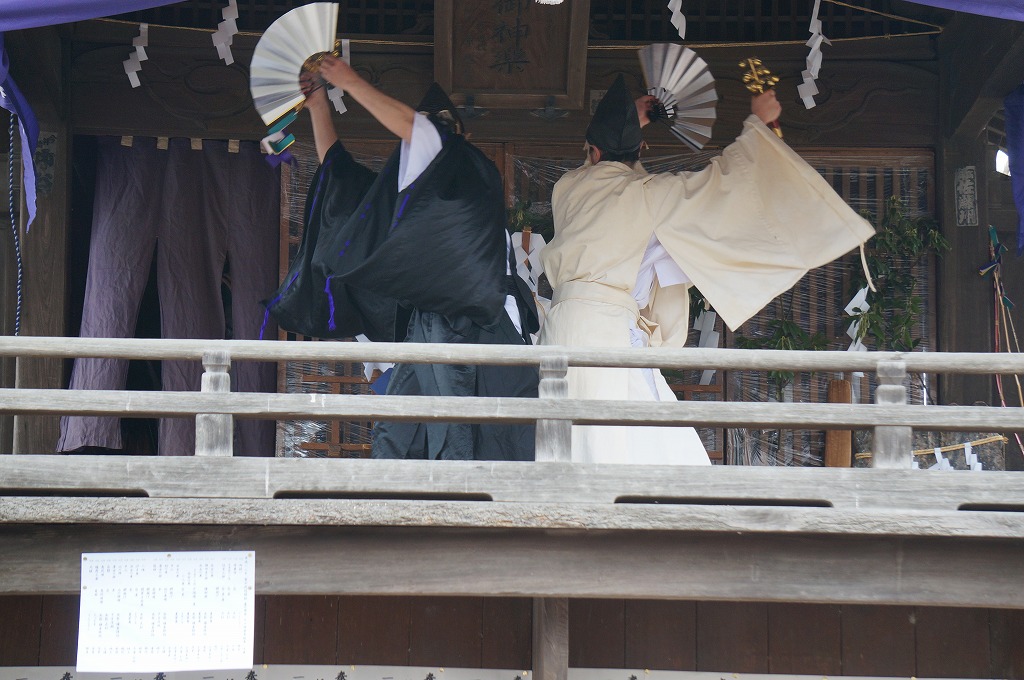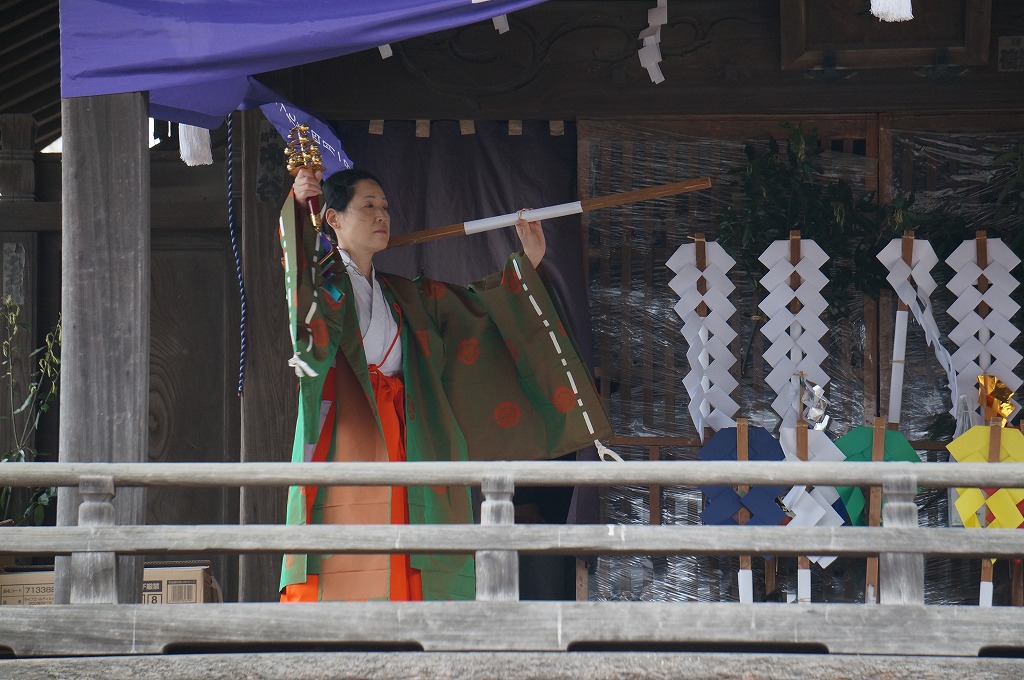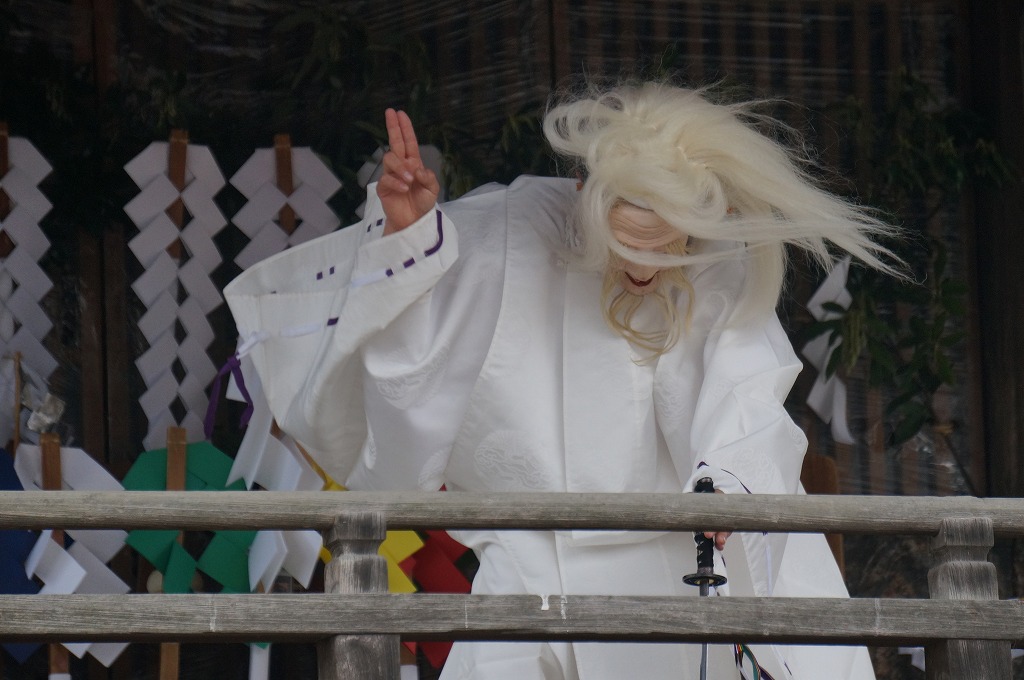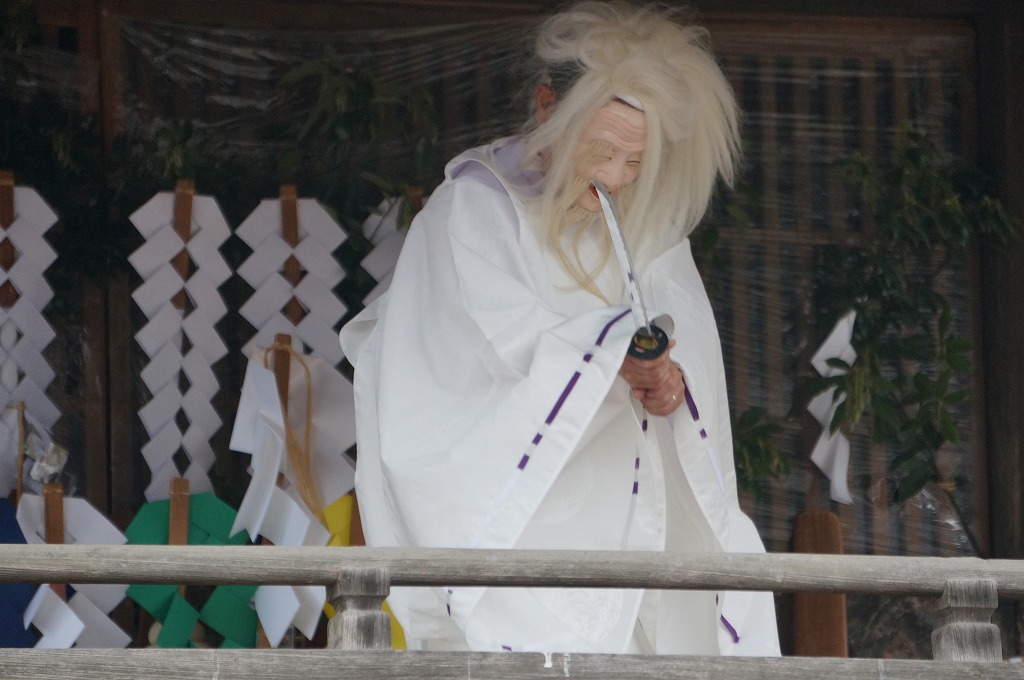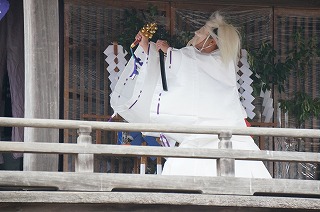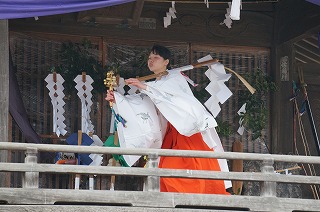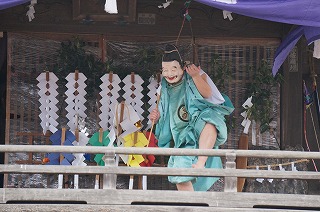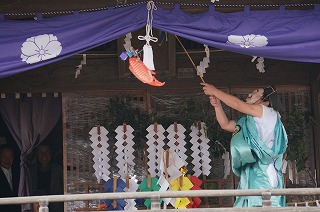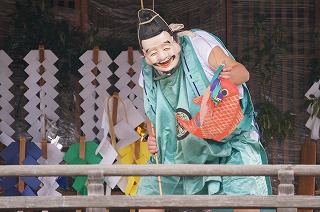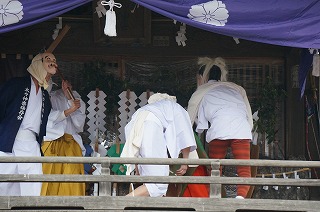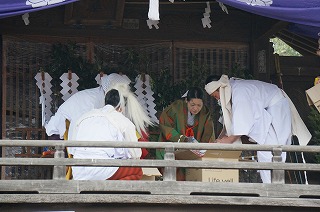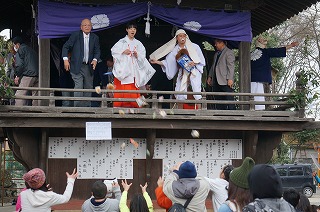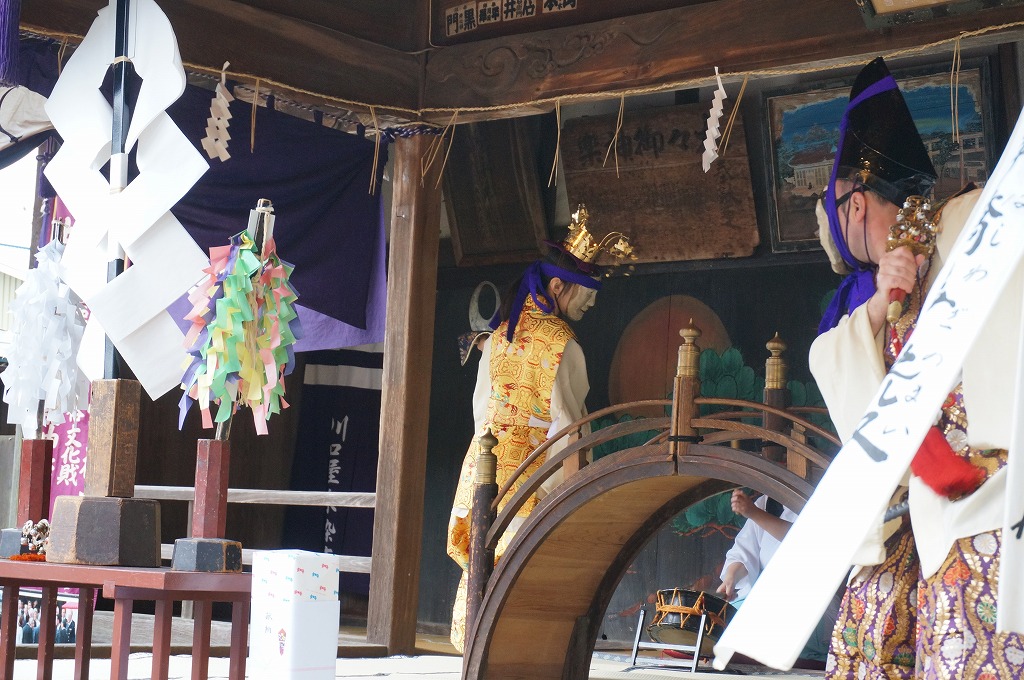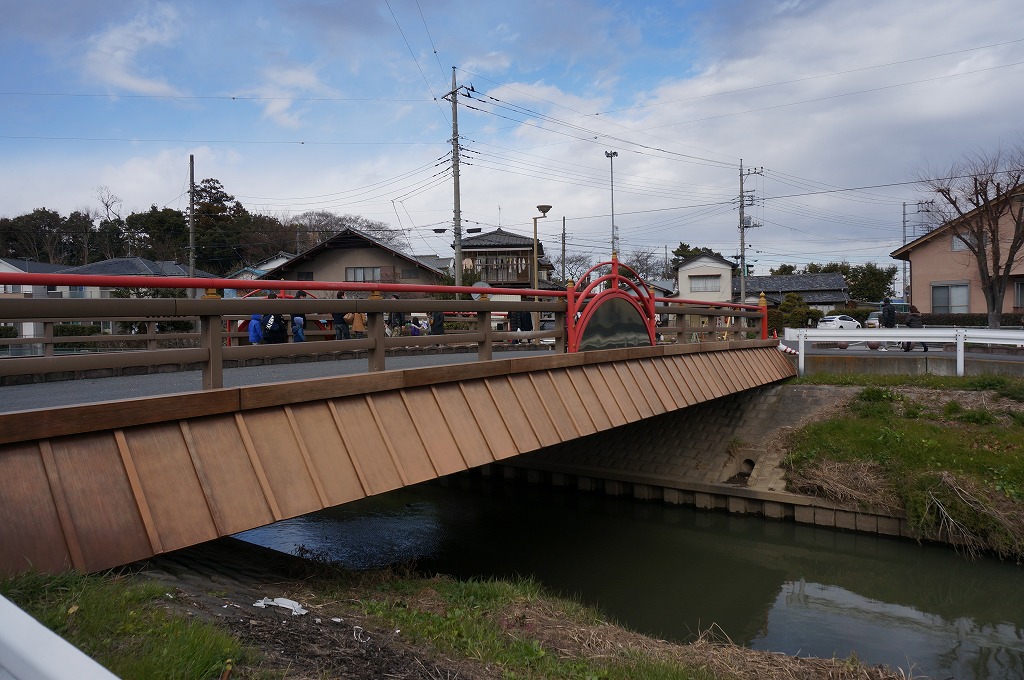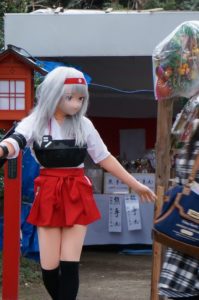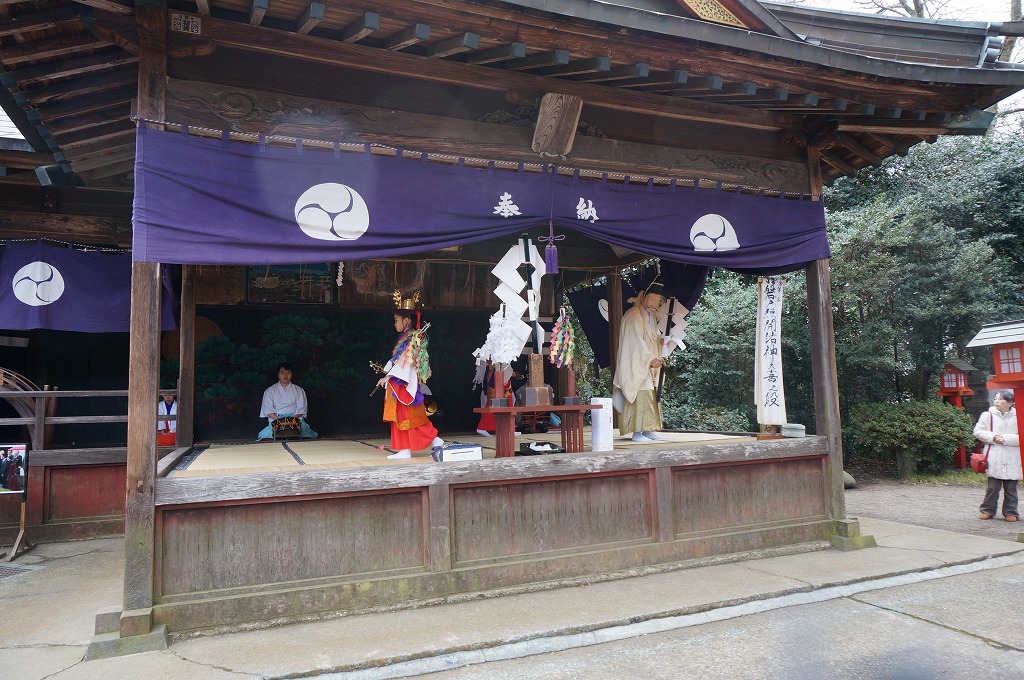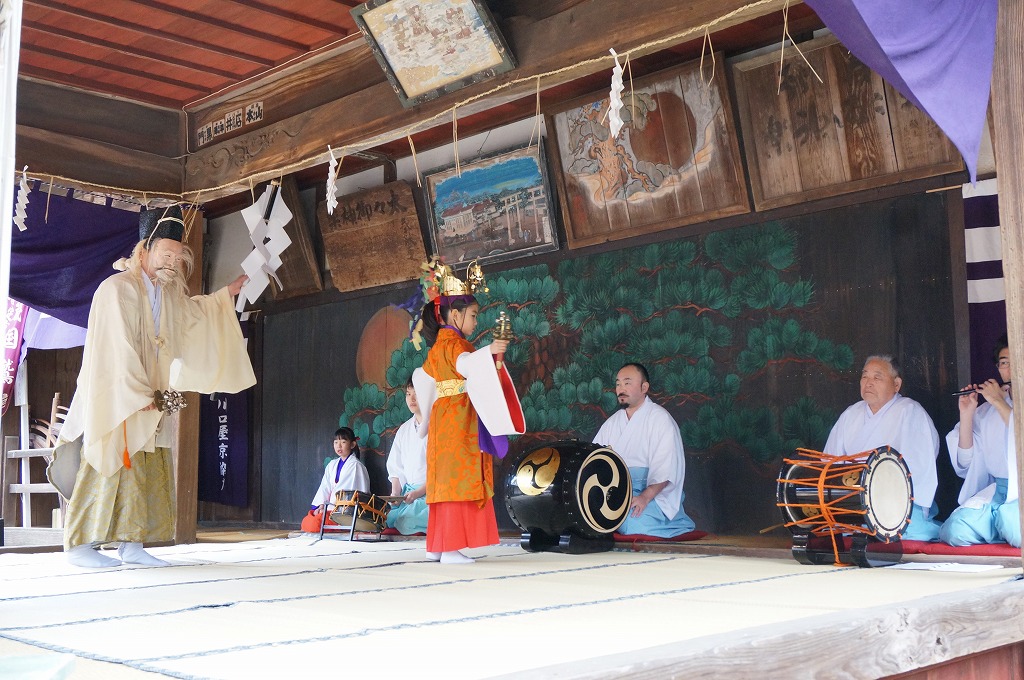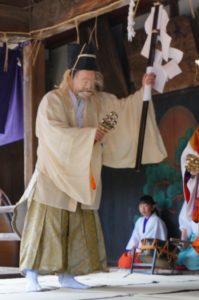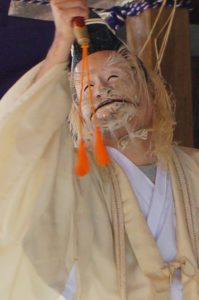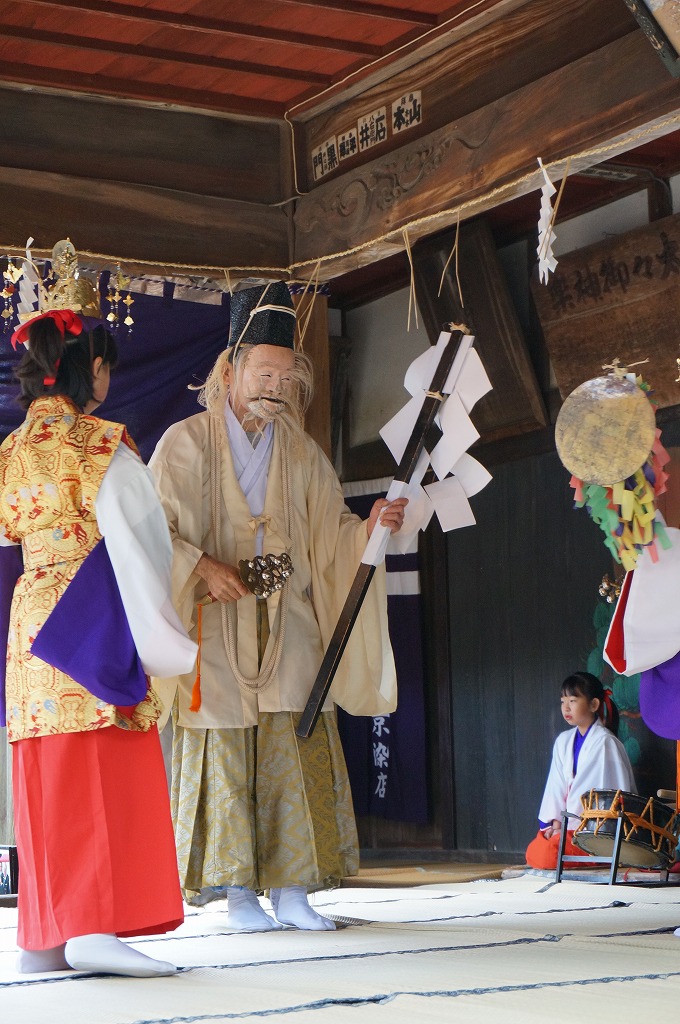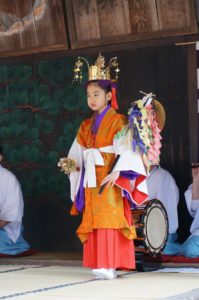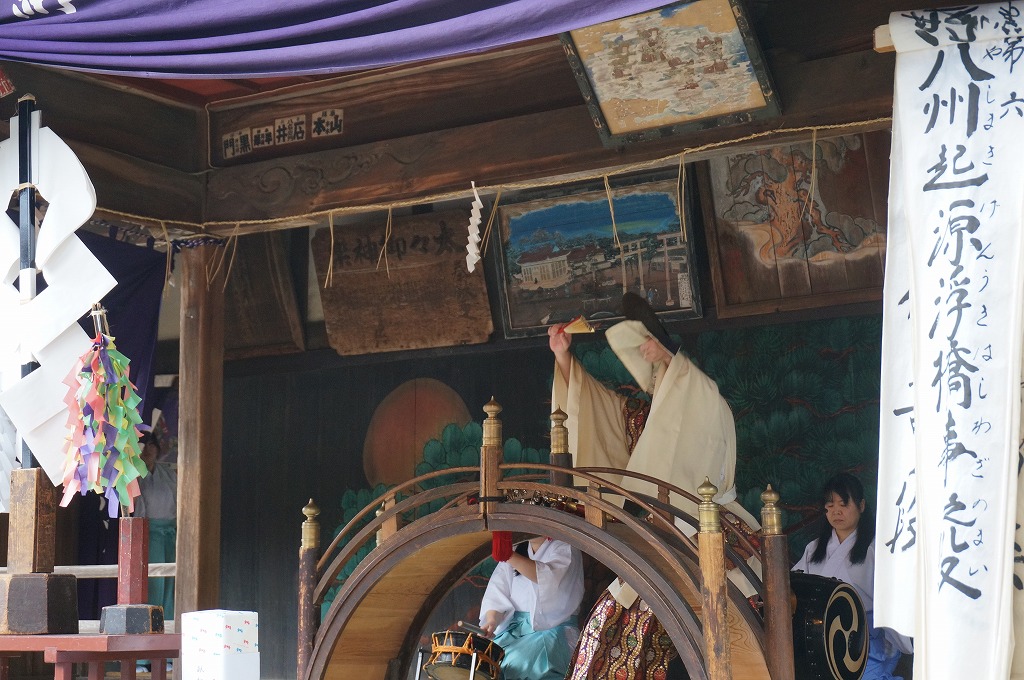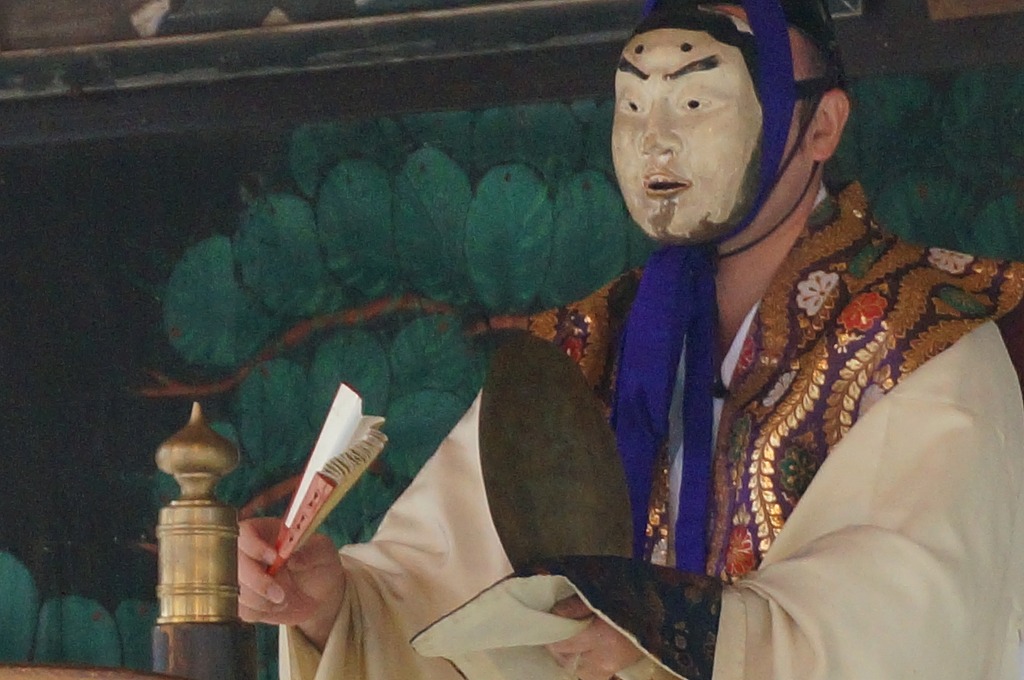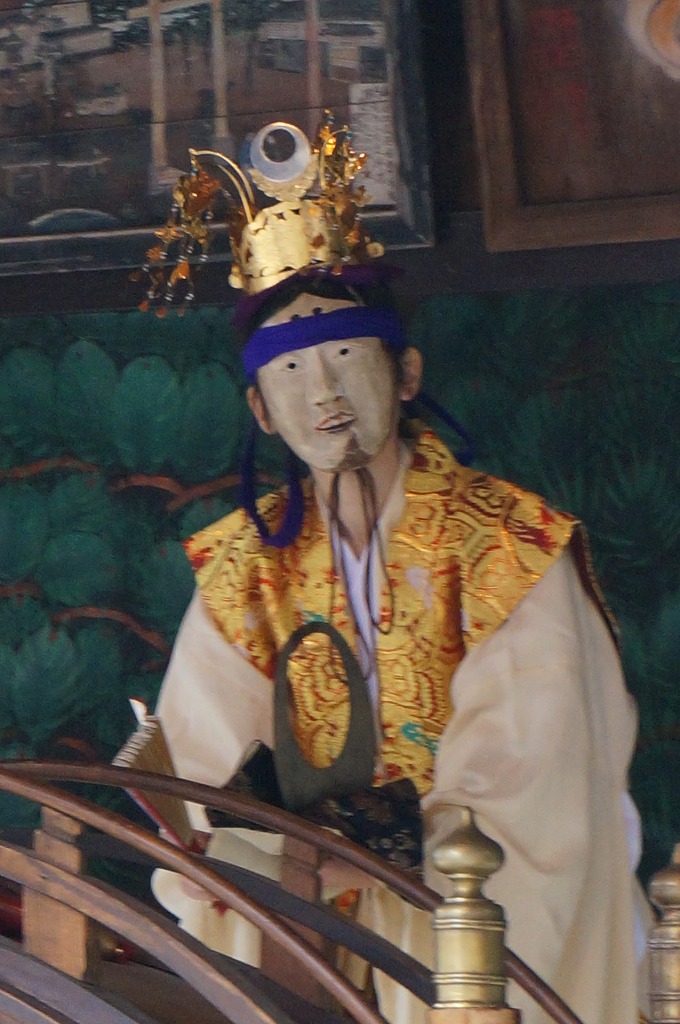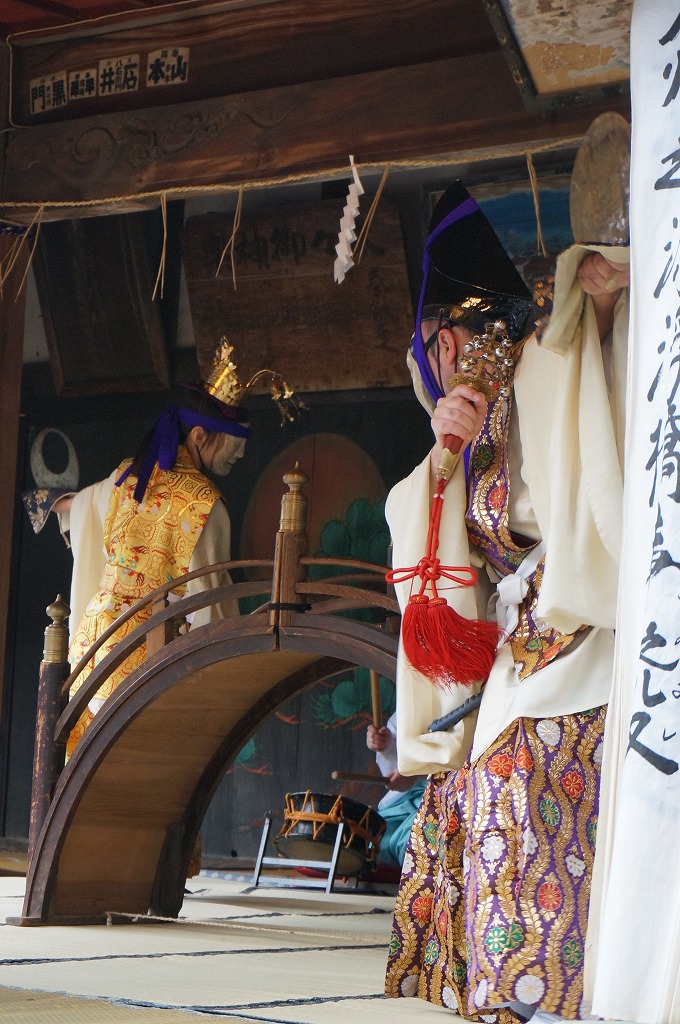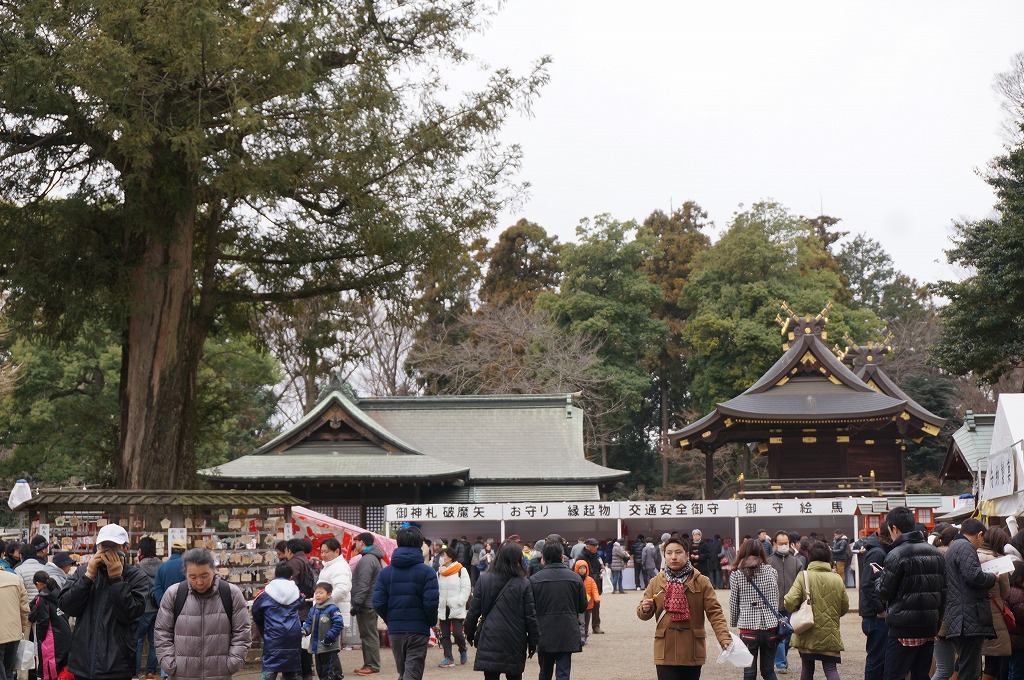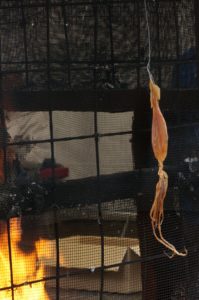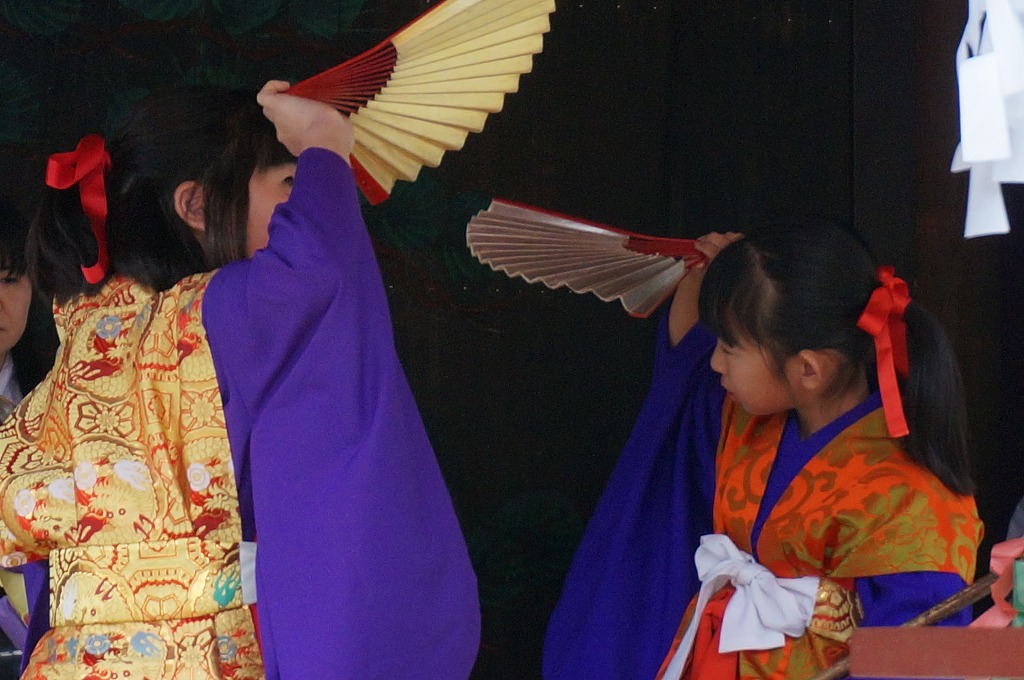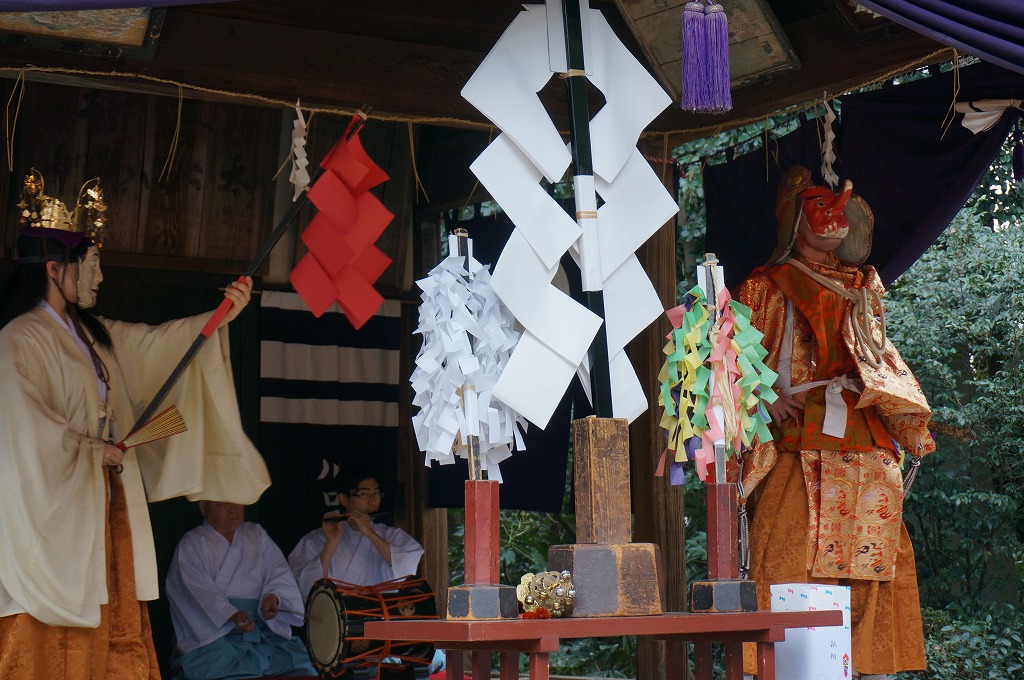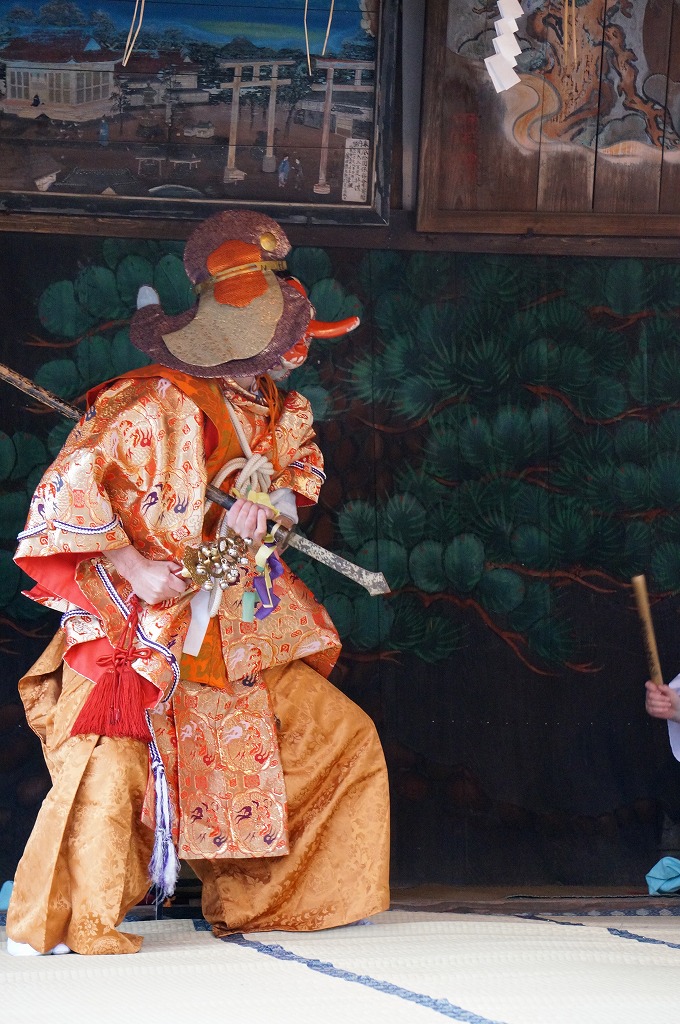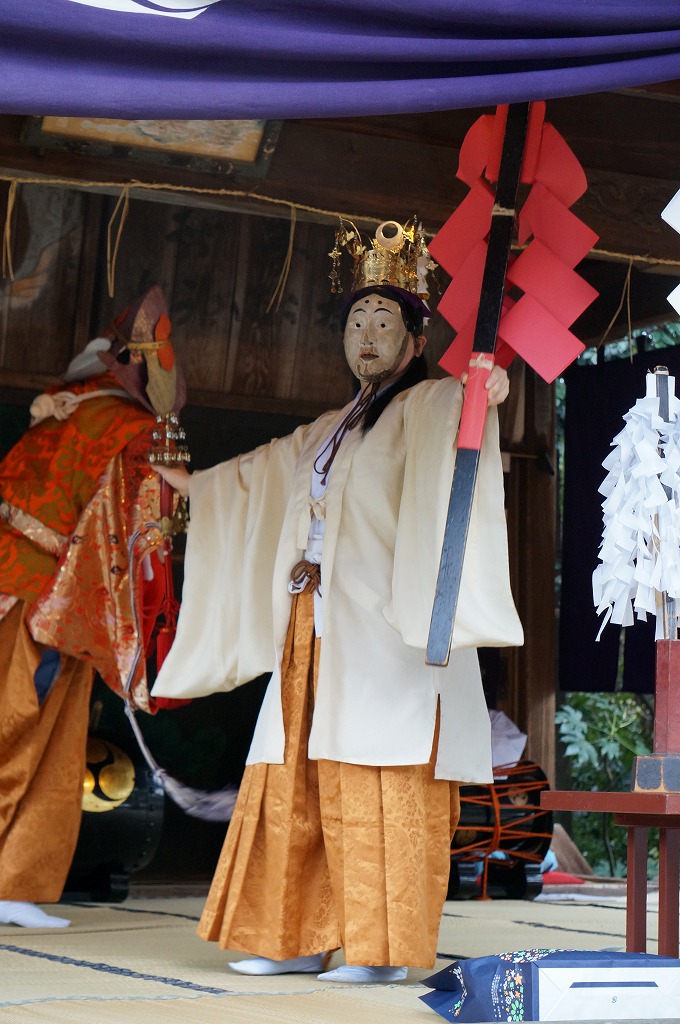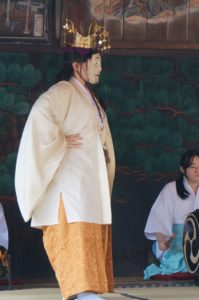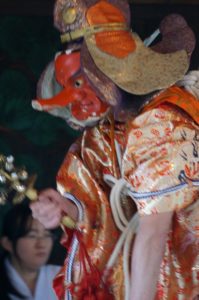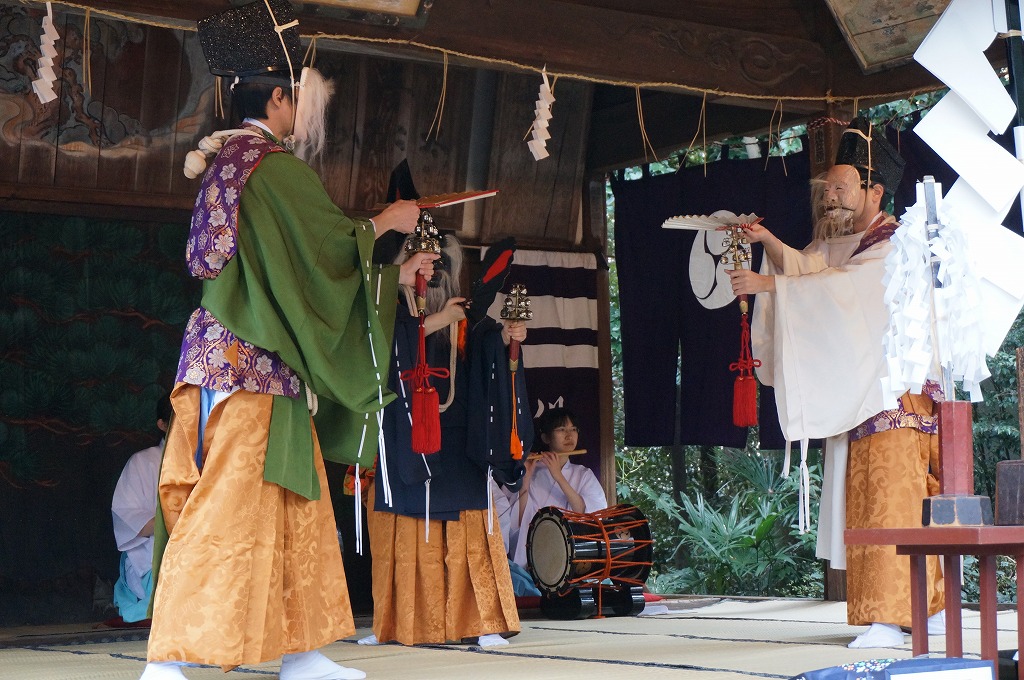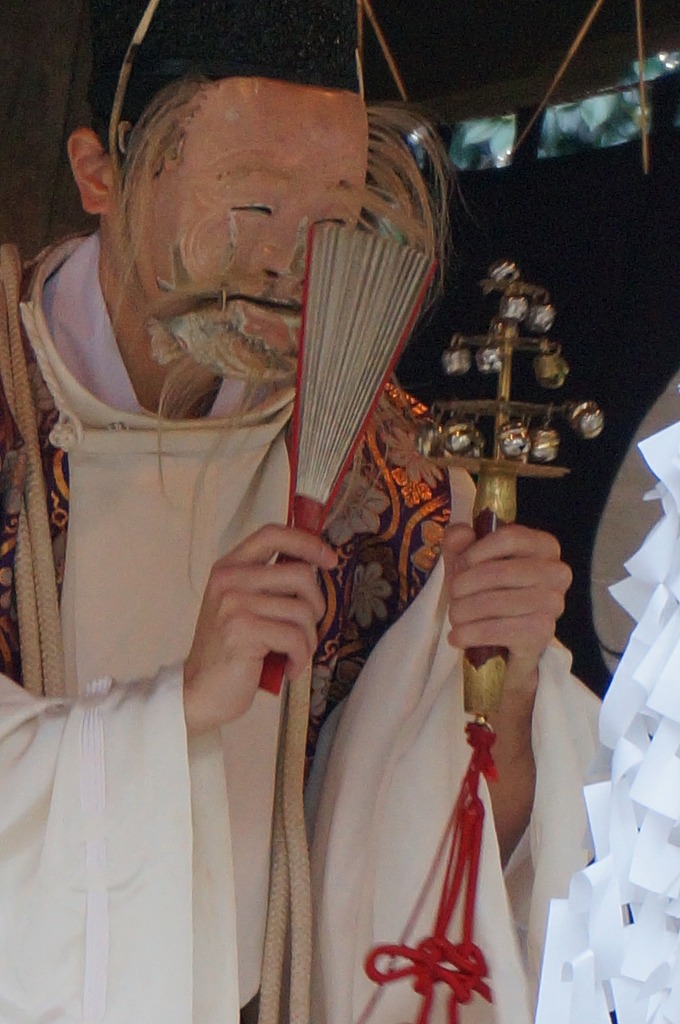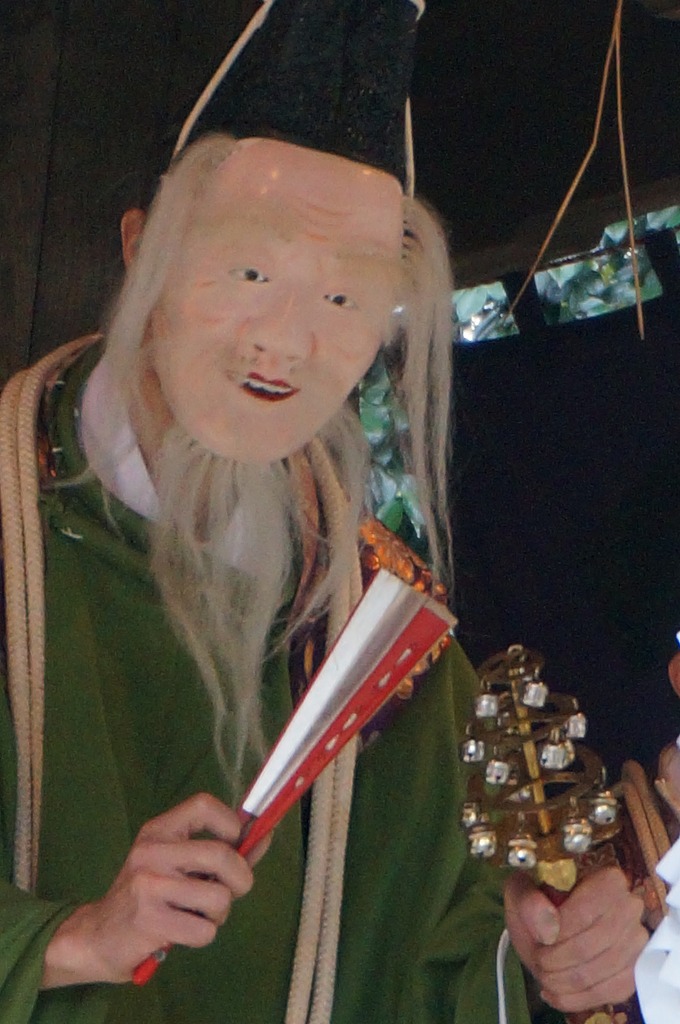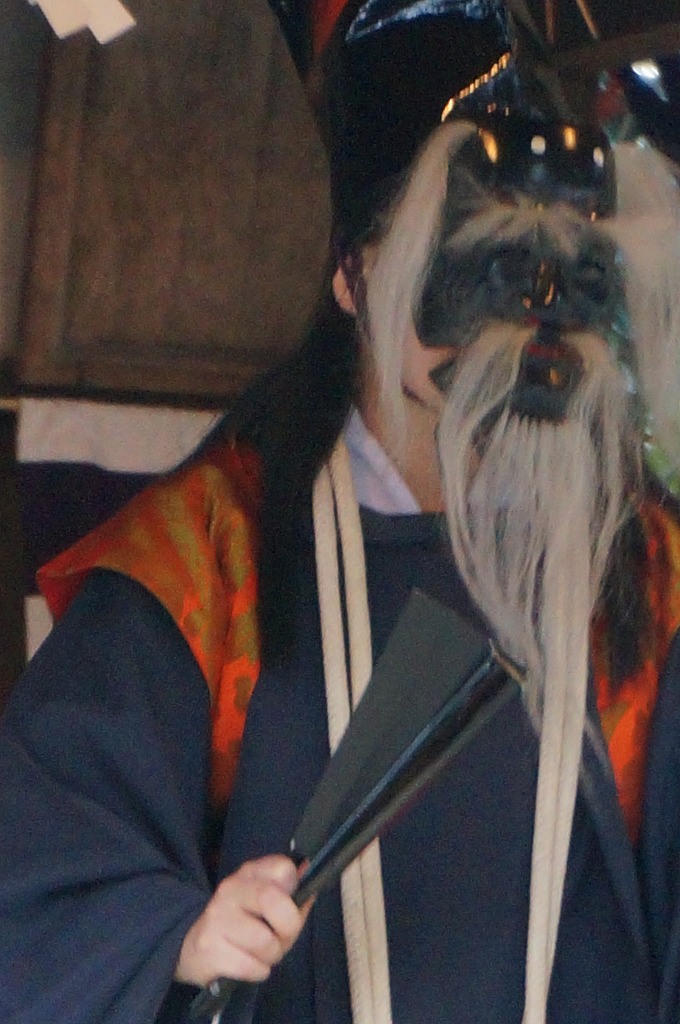Report: Would you mind spending a calm day at a place away from urban noise ? ~Part 4 Yuki Suwa shrine Daidai-Kagura~
Finally the special feature article, “Let’s go to the city to watch local Kagura during beautiful cherry blossoms season”, this is the last of the series. Two guides who took you to various kagura till now will take and guide you this time too. Hey, two guys, are you ready? OK, let’s start!
*If you want to know who they are, read the article, part 1.

Date; 3rd April
Location; Kamiyamakawa 160, Yuki city, Ibaraki prefecture
Access; about 7 kilometers from Yuki 結城 station. To get to Yuki from Tokyo, you take Ueno-Tokyo line(JR line, bound for Utsunomiya. It takes 1.5 hours), and change at Oyama, for Mito line (JR). It takes 15 minutes.
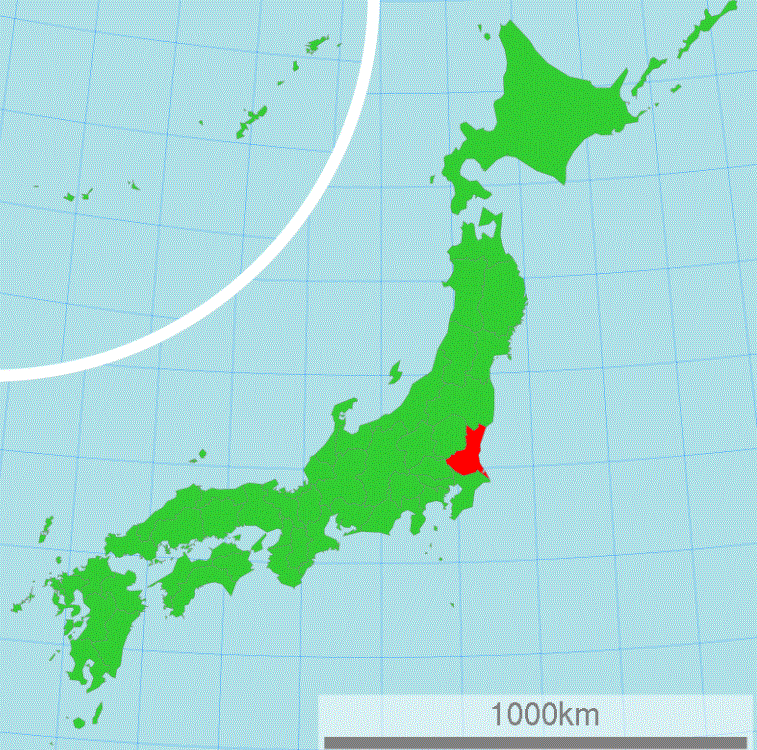

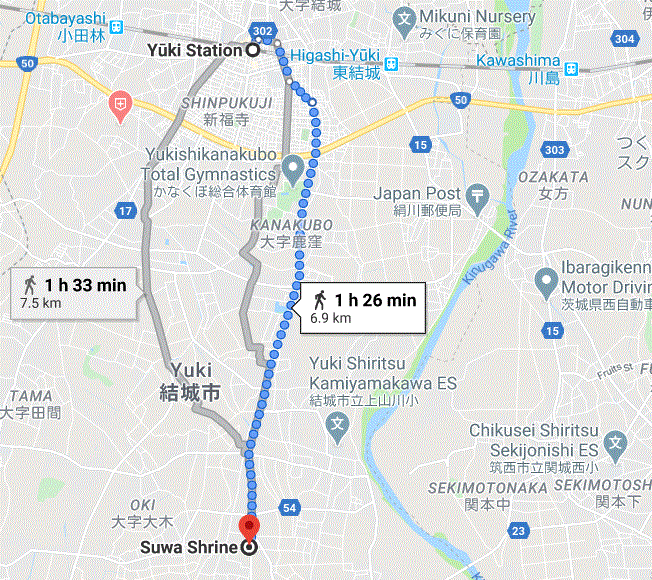

Oh,no! 7 kilometers is a long way to walk. I can’t walk.
Don’t worry. In this station, there is a corner to rent a bicycle. You pay \500 and \1,000 for deposit, you can rent a bicycle for a day. When you return it, the \1,000 deposit will be refunded to you. (as of 2020)
Bicycle? Certainly, it’s a good deal (cheaper). But I didn’t expect you to suggest riding a bicycle.
Is there something wrong for a deity to get on a bicycle? It takes about 20 minutes by bicycle.
OK,OK. Anyway let’s just go.
Introduction
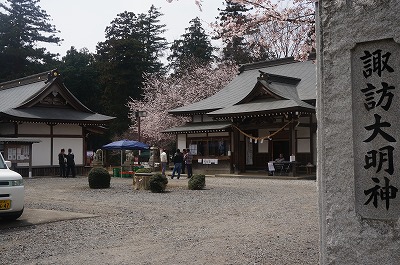
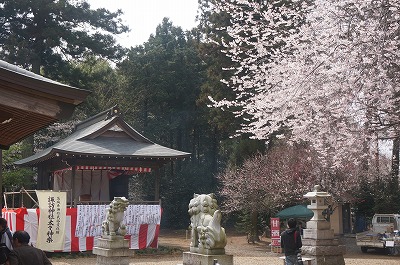
Isn’t this shrine cozy and modest? Cherry blossoms seem to bless the festival. The kagura-den is dressed up today. Oh, several booths by local people sell some food and drinks. Shaved ice, Yakitori (Japanese kebabs), steamed potatoes and Amazake (a sweet fermented rice drink). What time does kagura start?
You are really greedy. I wonder if it is too early to sell shaved ice. Well, the Shinto ritual starts at noon, so kagura will start in 45 minutes.
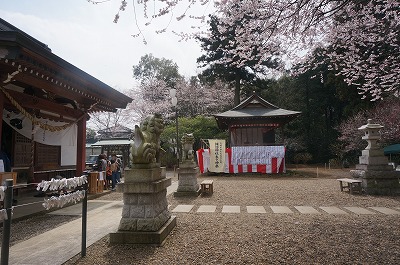
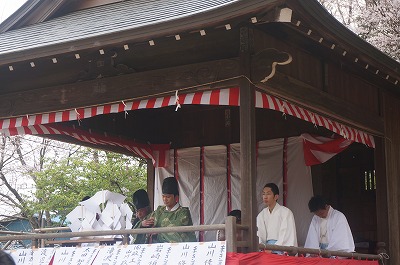
1.”Dance of Gogyo”
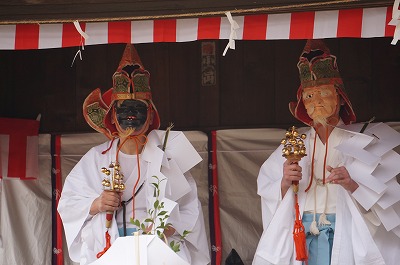



Kagura’s first program has began. The program board says “Dance of Gogyo”… What does “Gogyo” mean?
This name comes from the two principles of ancient Chinese. One is the philosophy of “Yin and Yang”, another is the thought of “Gogyo”. “Yin and Yang” is negative and positive. The ancient people thought that the universe had derived from Yin and Yang. Apart from that, they also thought that the universe consisted of five elements, that is, wood, fire, earth, metal, and water. Finally, they reached the conclusion that these thoughts made it possible to explain everything. These philosophies were introduced to Japan in the 6th century, and had had a great influence. Do you understand?
I guess I understand the outline. So, black and white dancers appear in this program, don’t they?
Yes. Although this story may seem difficult, this thought has affected the lifestyle of Japanese until today. For example, when Japanese decide on the date of weddings, they set a date based on this theory.
I thought better of you. You are a genuine deity guide.
Aha!
2.”Sarutahiko”
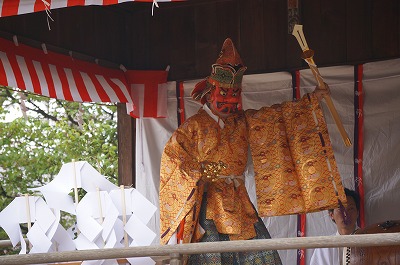
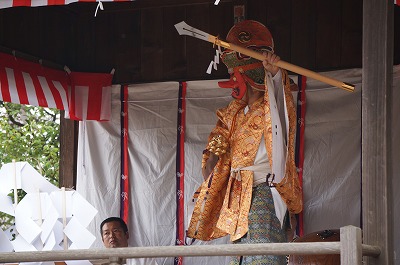
That’s dance of Sarutahiko. I was waiting for him. It’s about time!
Moves of this dancer’s Sarutahiko have the same feature in Kanto area. It’s a very magical action to expel evil spirits from the stage.
3. “An archer”

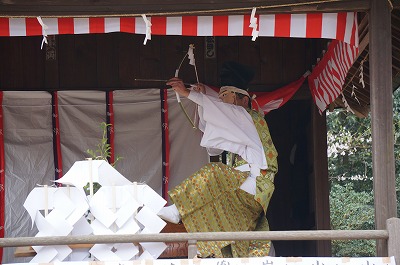
He is handsome.
He is a deity of an archer. He shoots an arrow to drive away evil spirits.


Look at the papers in front of the stage. Many names are on the papers. What do they mean?
They are the names of sponsors. They offer sweets, liquor, money and so on.
Many sweets! I can have high hopes for “mochinage (the throwing-many-things ceremony to celebrate).
I knew you would say that.
4. “The old man holding a sword”
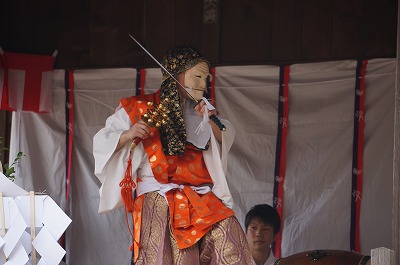
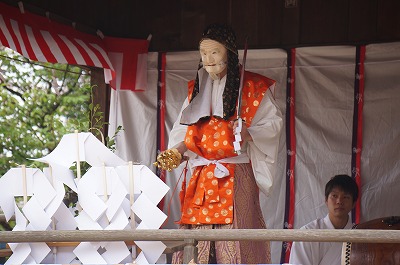
He is not an old man. His old face shows thoughtfulness and consideration. His name is “Omoikane”. Do you remember this name?
Yes. He is the most intelligent deity. When “Amaterasu” had hidden behind the Iwato, he was the key deity to devise the plan to bring her out. Is that right?
Good! →*see “Reference”/Japanese mythology, “Iwato biraki”, please
5 & 6. “Inari (man and woman)”
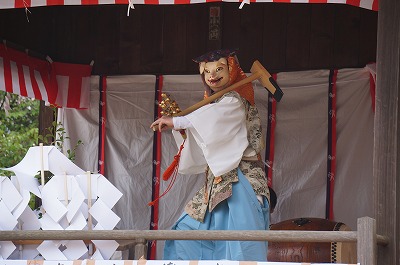
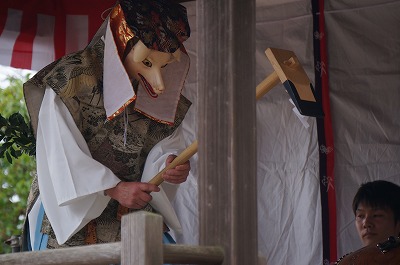
These foxes are good looking and their clothes are classy.
They are the messengers of the deity for planting rice. They are not just foxes.
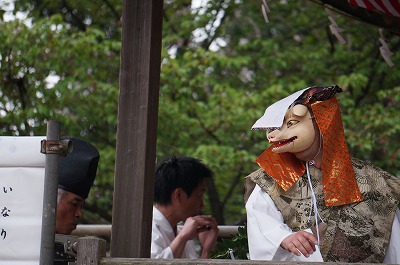
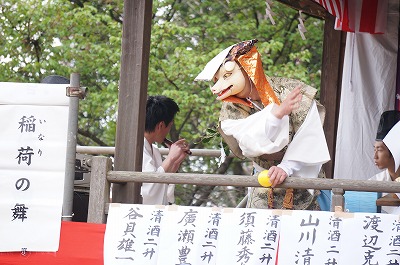
That fox is going to throw something here…Oh, no. He threw it in a different direction. He is pretty clever!
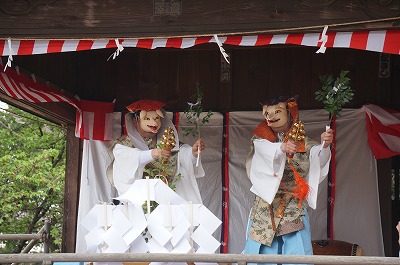
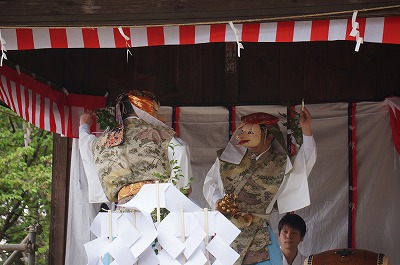
Aren’t they male and female according to the title?
Maybe..This program, as you would think, took 15 minutes, nevertheless, others just took 10 minutes.
7. “Rice harvesting”
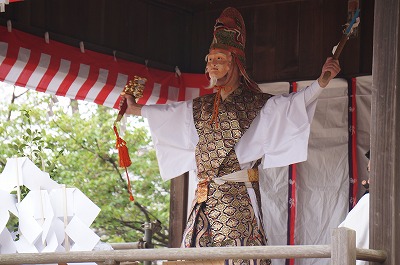
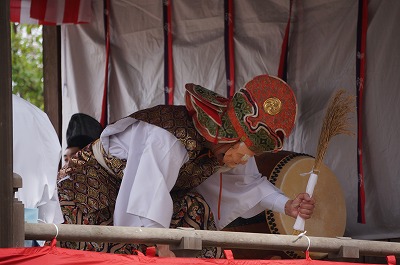
8. “Ebisu”
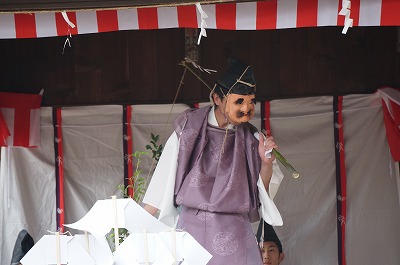

The audience has gathered before I knew it. That’s Ebisu. He is popular. At once, he is going to fish something.

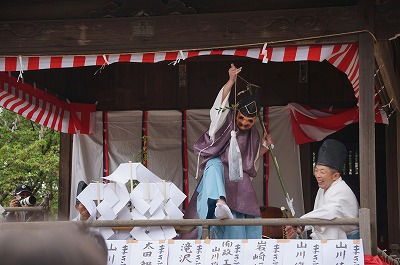
Oh, sake! It looks heavy.
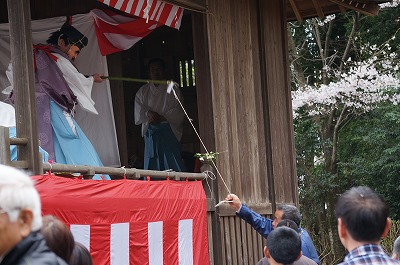
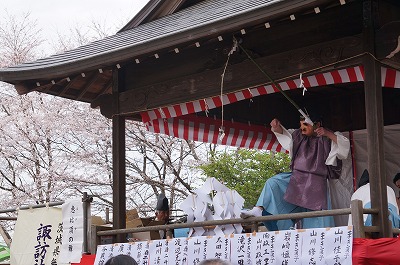
Oh, did you look at that? That’s money!
That is gift money.
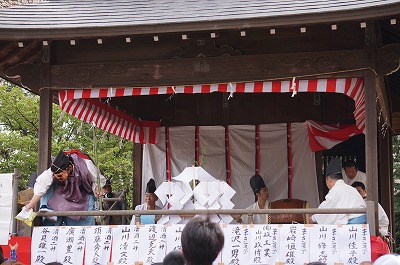
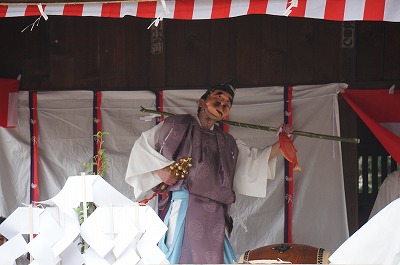
You only mention him getting things, but actually he does a lot of giving too. He is a deity who “gives fortune”.
He finally has fished a red snapper. Look at his triumphant expression. But why is a red snapper auspicious in Japan?
It’s a simple reason. When people want to express congratulation or happiness, they say “medetai” in Japanese. “Tai” means red snapper. It’s a pun or word play. In addition, this fish’s color is red and looks good. Red is considered to protect us from evil.
How simple-minded Japanese are.
You, too. Don’t forget that you are figments of their imagination.
9. “dance of Uzume”
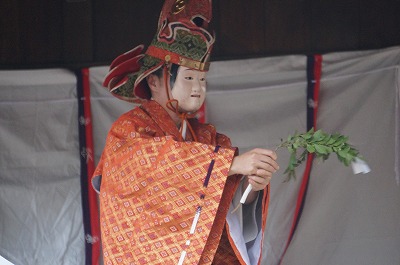
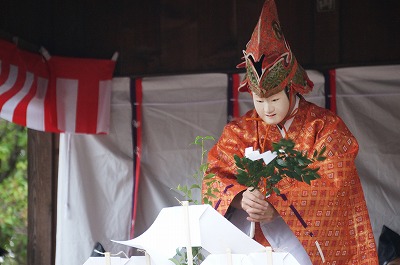
“Ameno Uzume” is coming. When it comes to “Uzme”….
“Iwato biraki” or “Tenson-korin”. →*please see “Reference”/Japan mythology
Yes. Now she comes out on the stage, Iwato-biraki is to come.
10. “Tajikarao~Amano Iwato-biraki”
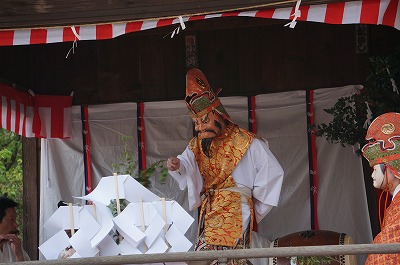
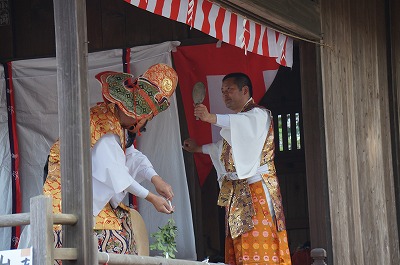
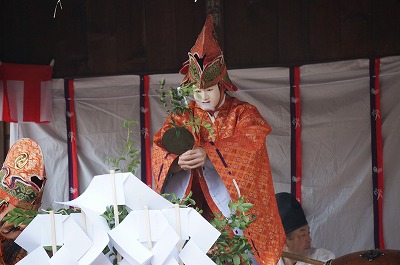
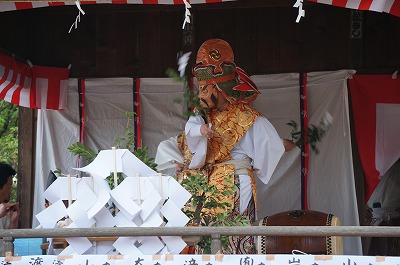
Here comes Tajikarao. This is the scene of “Iwato-biraki”. He took off the Sakaki (species of ever green) branches at the corner. This represents “Iwato”.
So does that mirror represent “Amaterasu”?
Yes. The direction of kagura like this can often be seen all over Japan. Amaterasu is a deity of the sun. A mirror is a symbol of the sun in Shintoism.
11. Ending~”Ohyamatsumi”
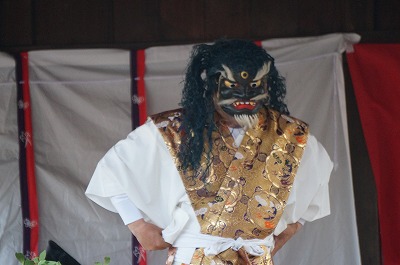
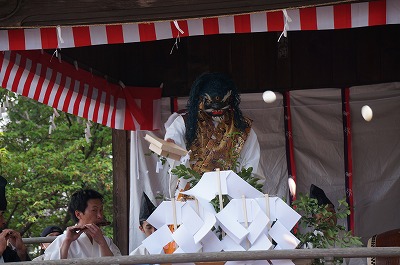
He has three eyes! Is he a yokai creature?
No, he is a deity named “Ohyamatsumi”. He often comes out towards the end of Kagura in the Kanto area. When it comes to Ohyamatsumi, it is the end in no time. The ending of kagura in Kanto area is…..
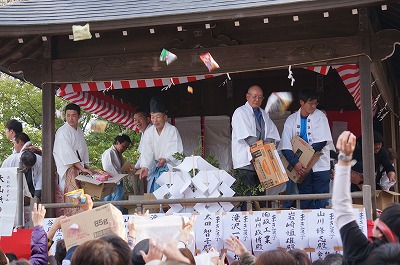
How many things there are! People throw things which were carried in relay by humans a while ago. Those things are not only sweets but also cup noodles and some foods. It’s great.
Many gifts which were piled up as a mountain are vanishing one by one. Are human beings greedy or generous? I’m not sure which is right.
That’s human!
Anyway, we went around many kaguras in Kanto area. What do you think of them?
I am getting to know the form of kagura in this area a little. They have a certain form but each has different features. I want to go to many different kagura. Didn’t you introduce a kagura of Ohmiya Sumiyoshi shrine you belong to?
Yes. There are many kaguras that I haven’t introduced yet in this area.
I want to watch the others as many as I can.
Sounds good! But, to be honest, you just want to get many sweets, don’t you?
You get it!
